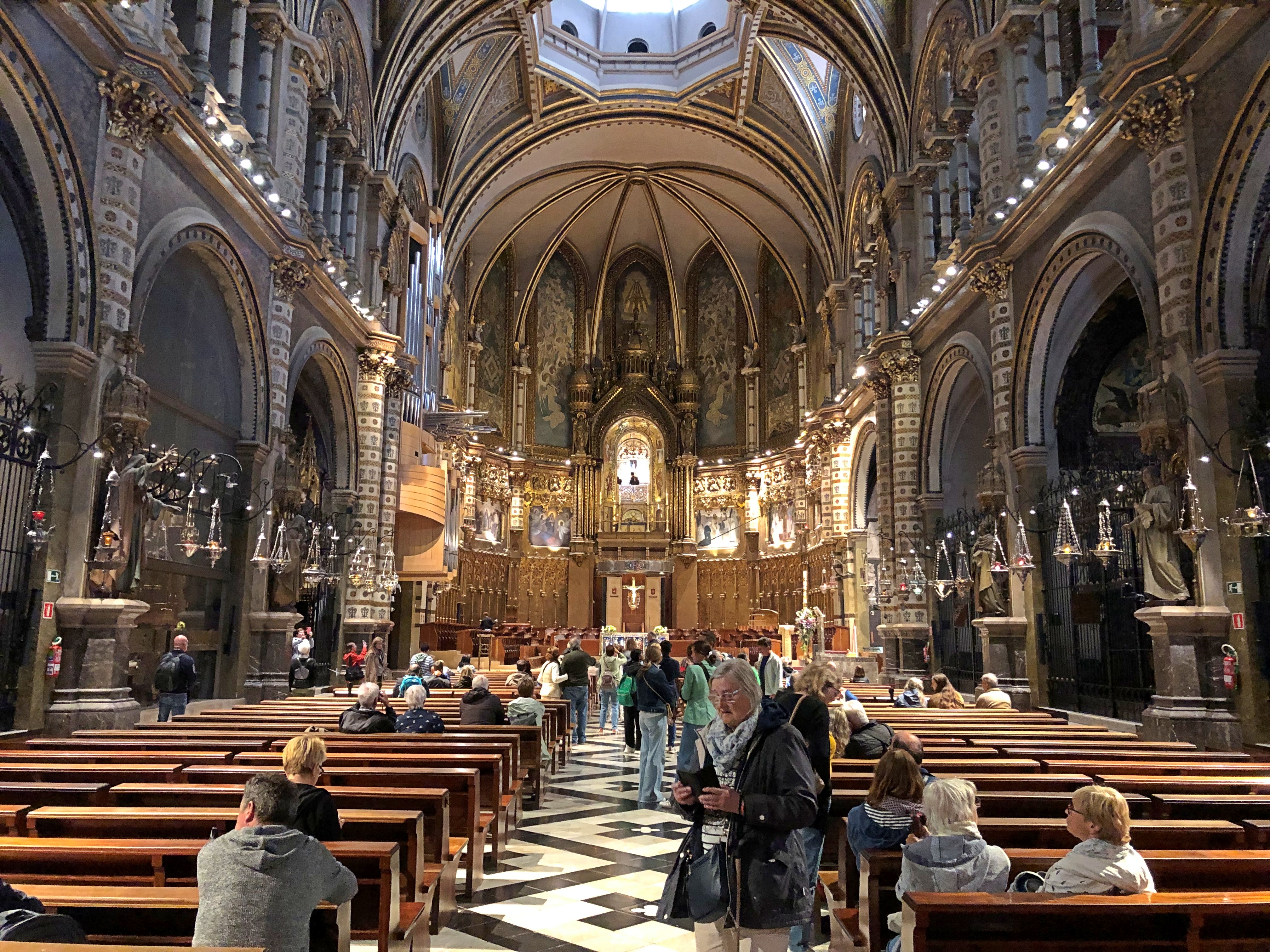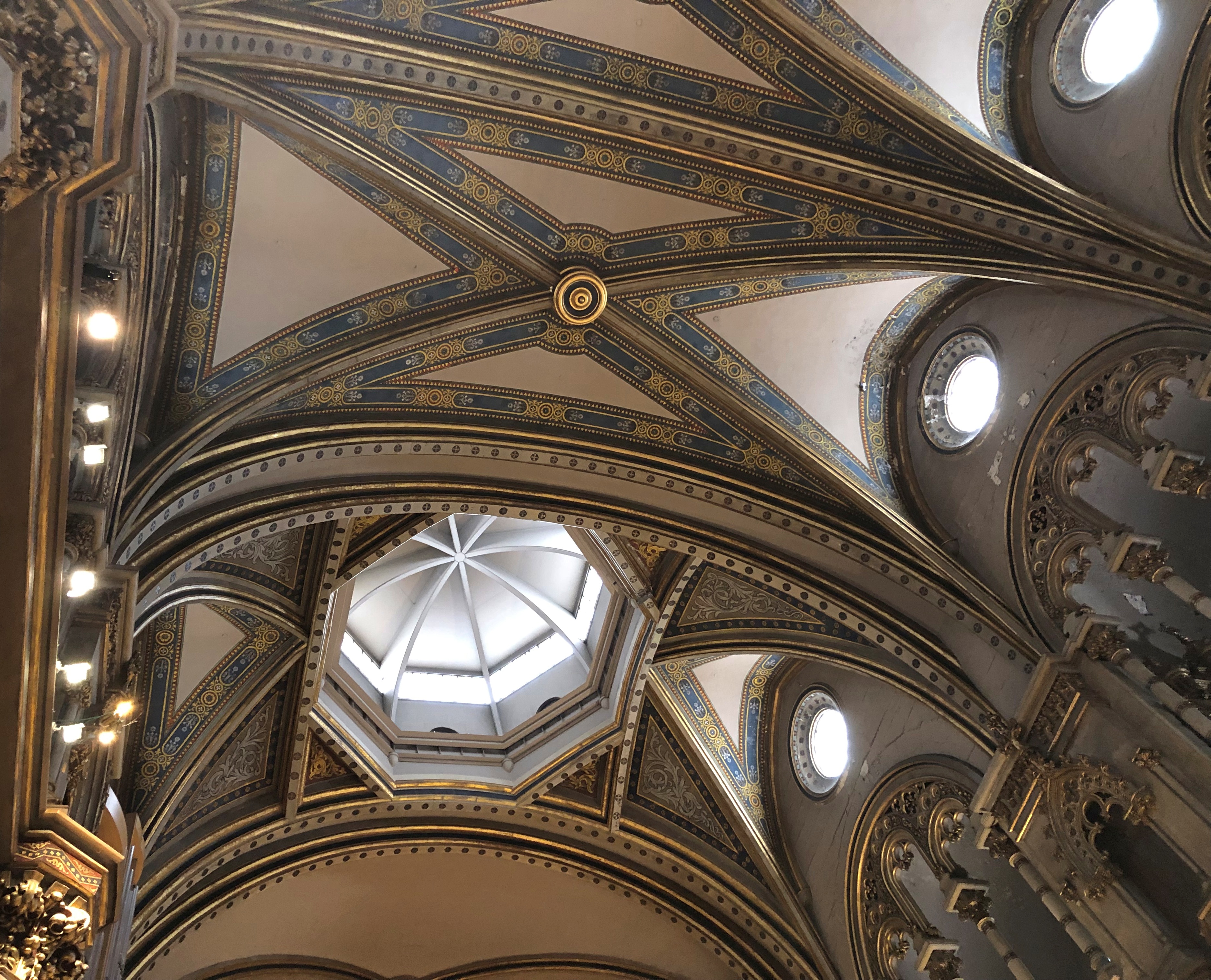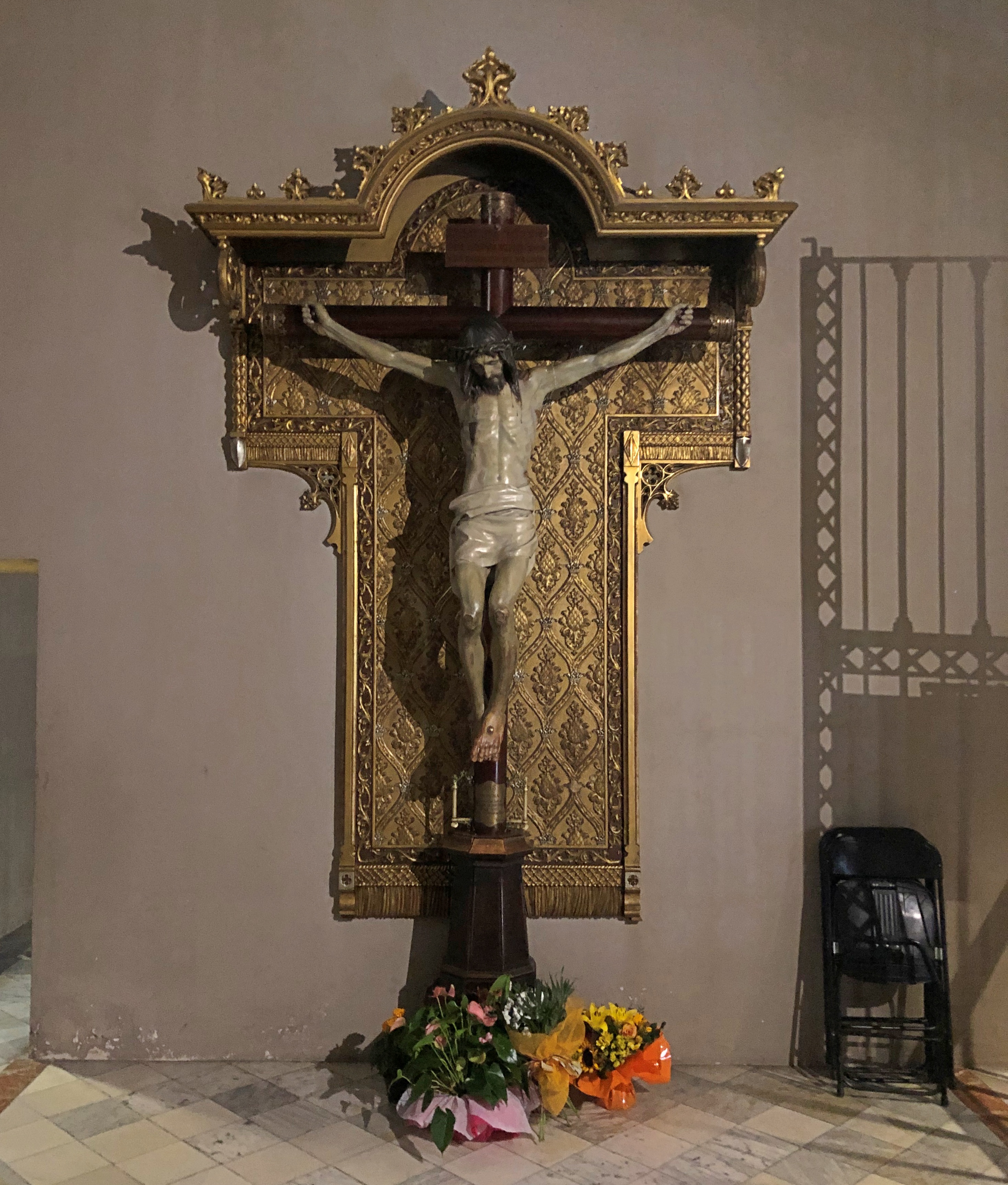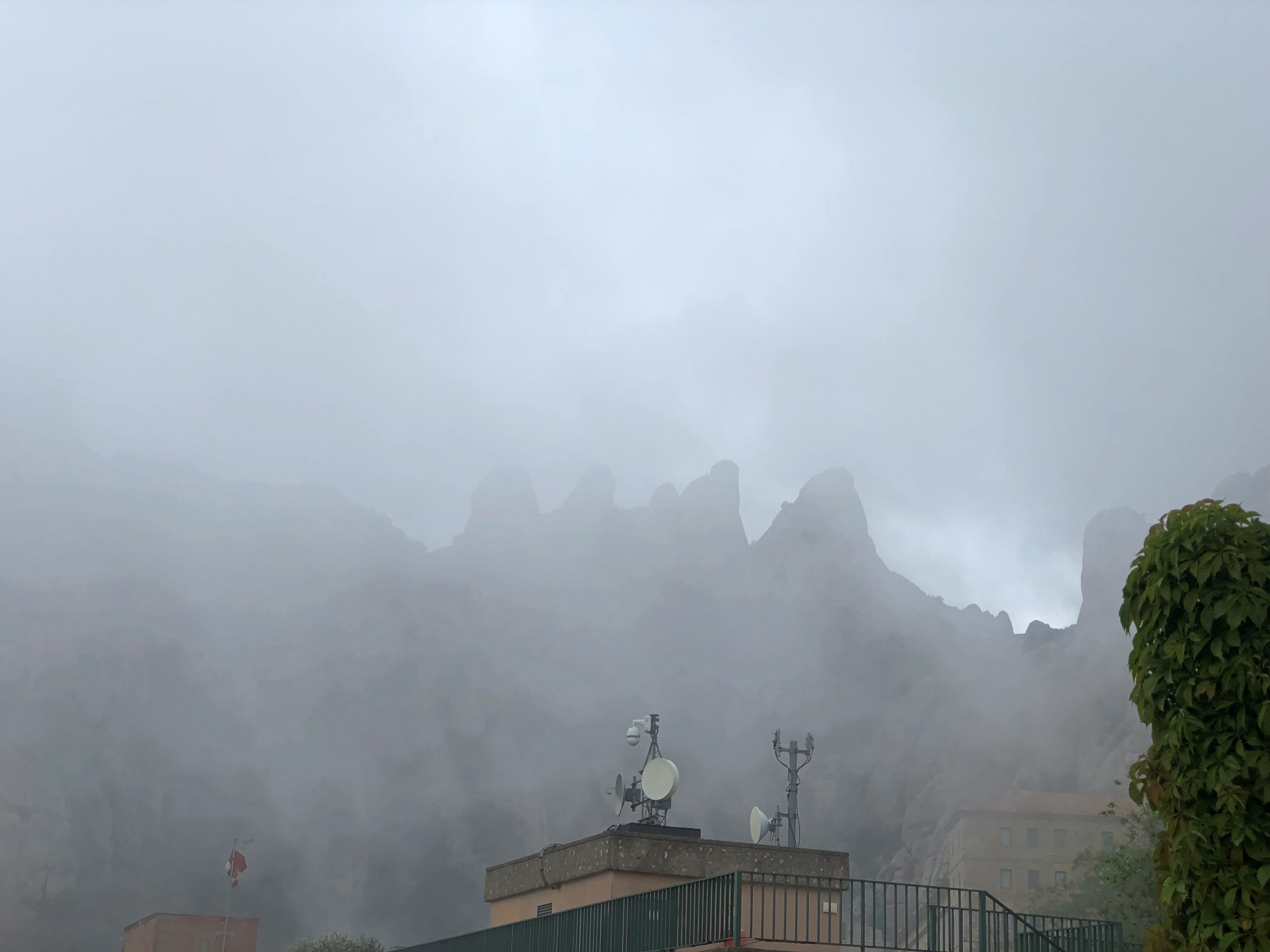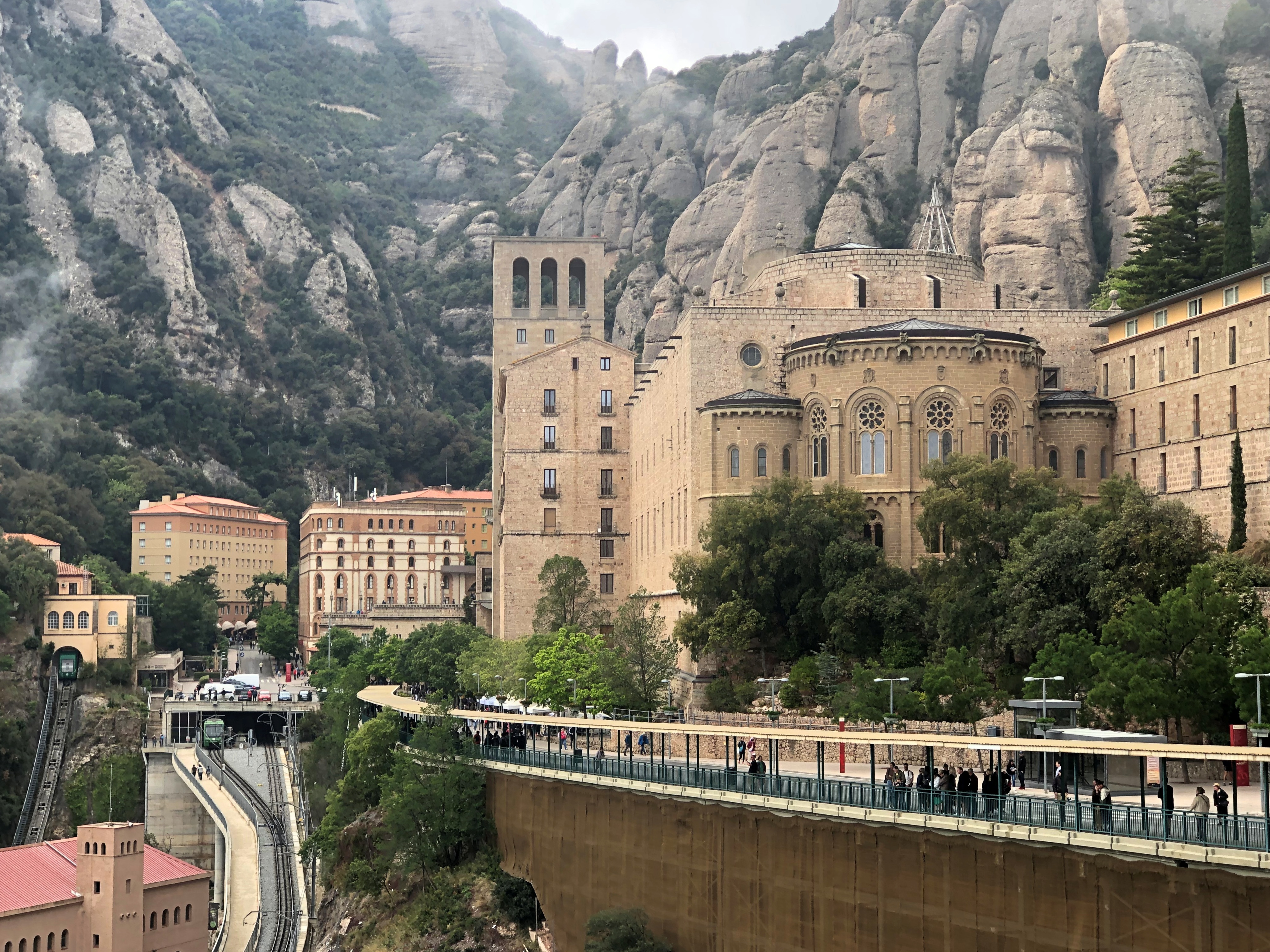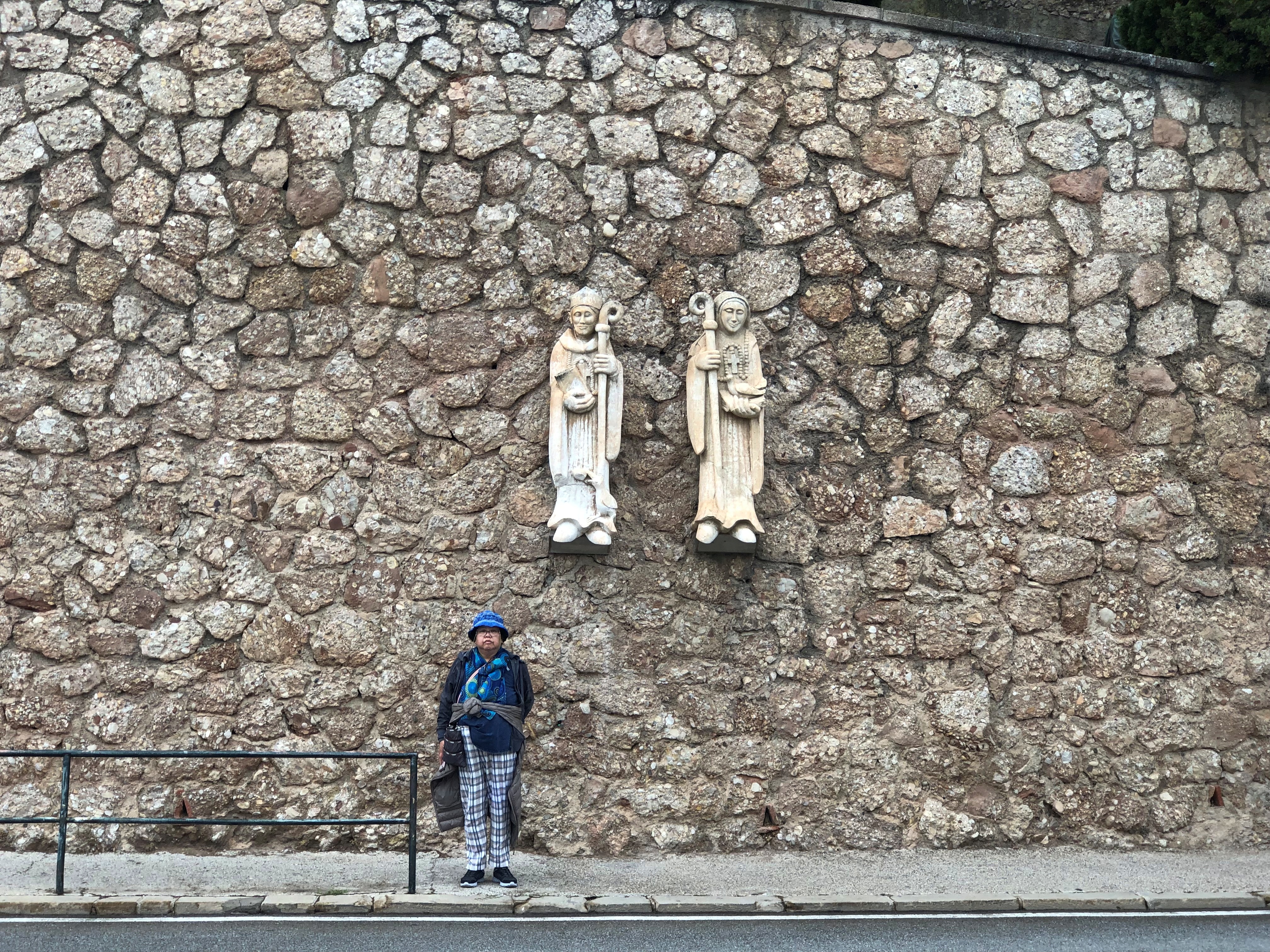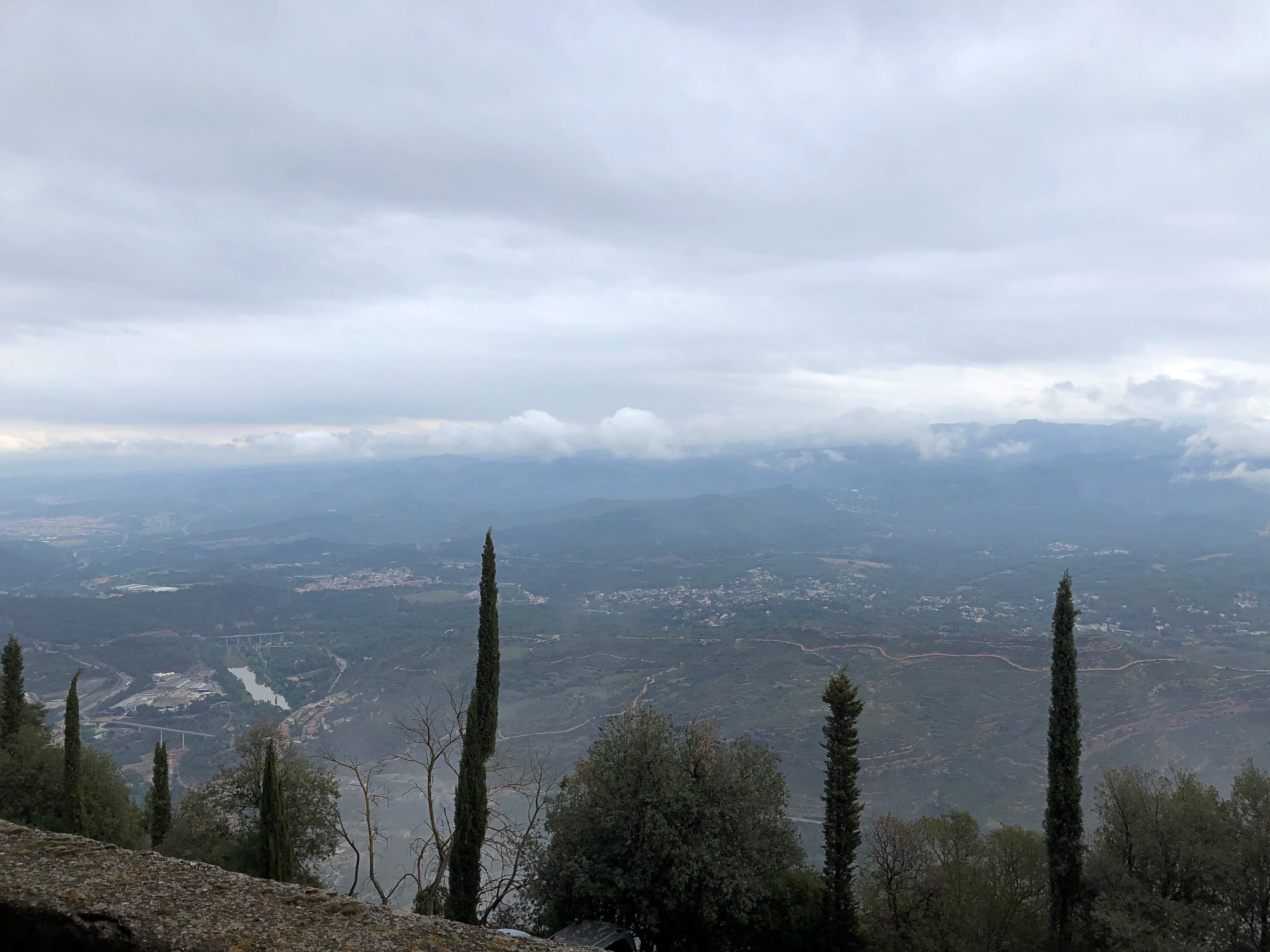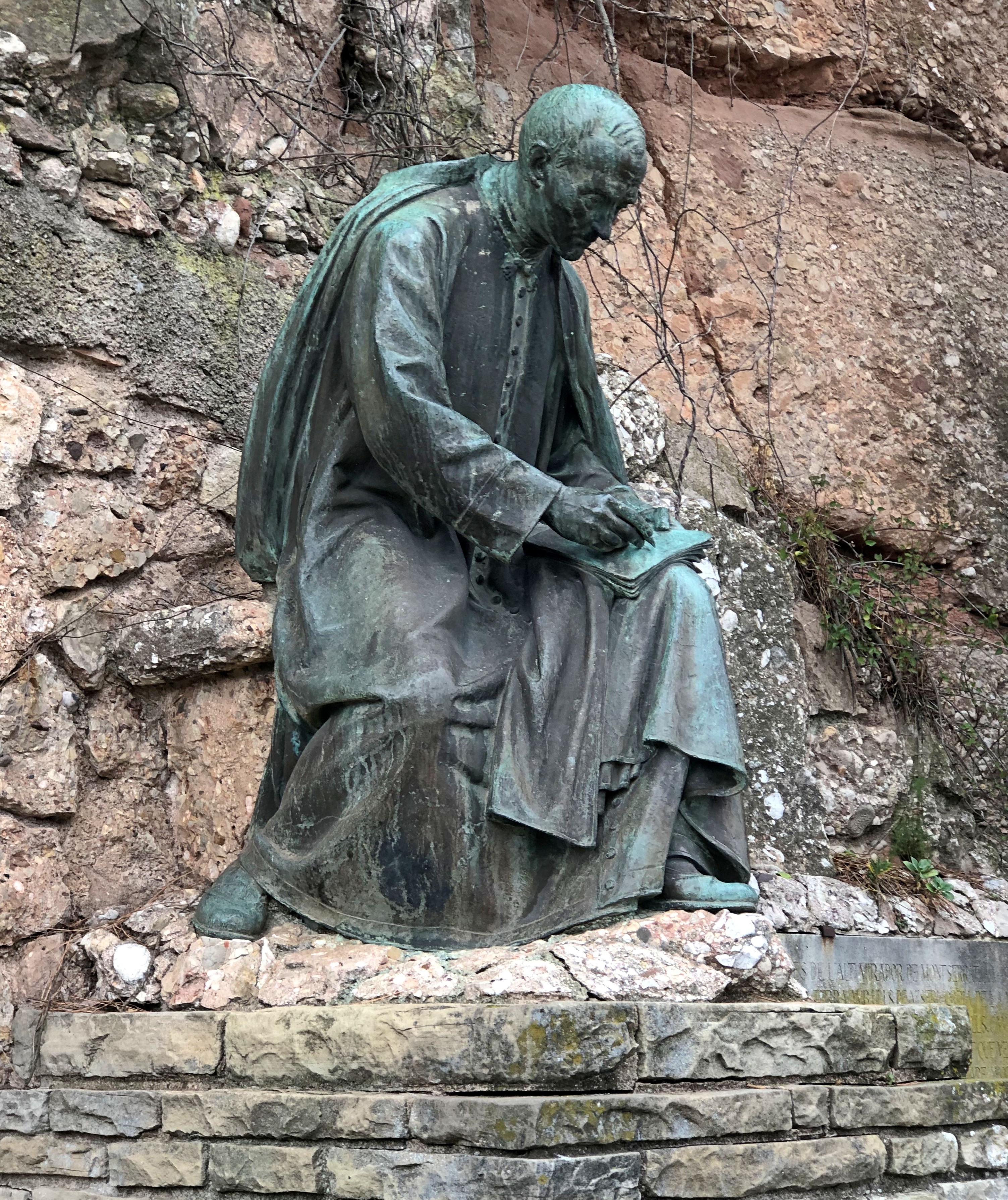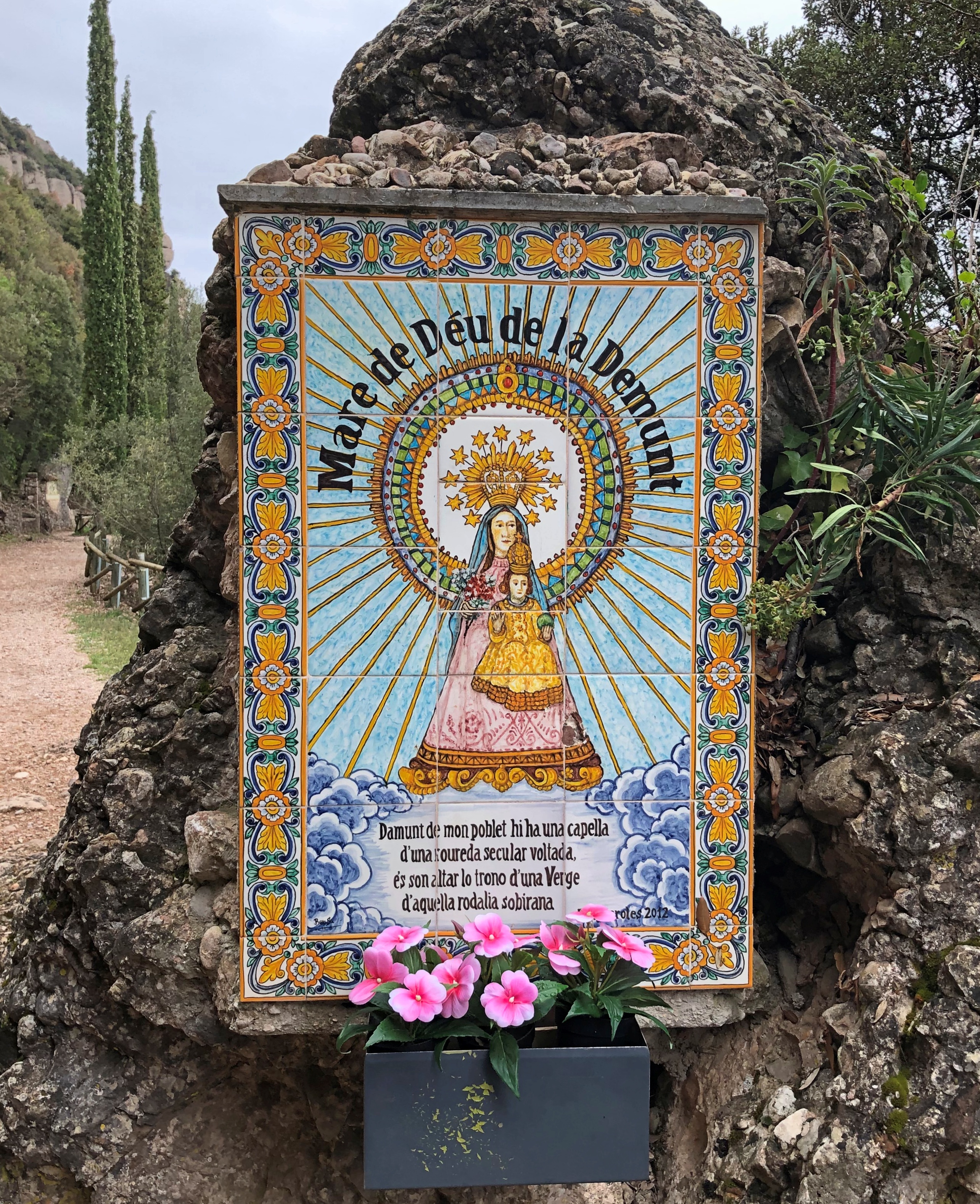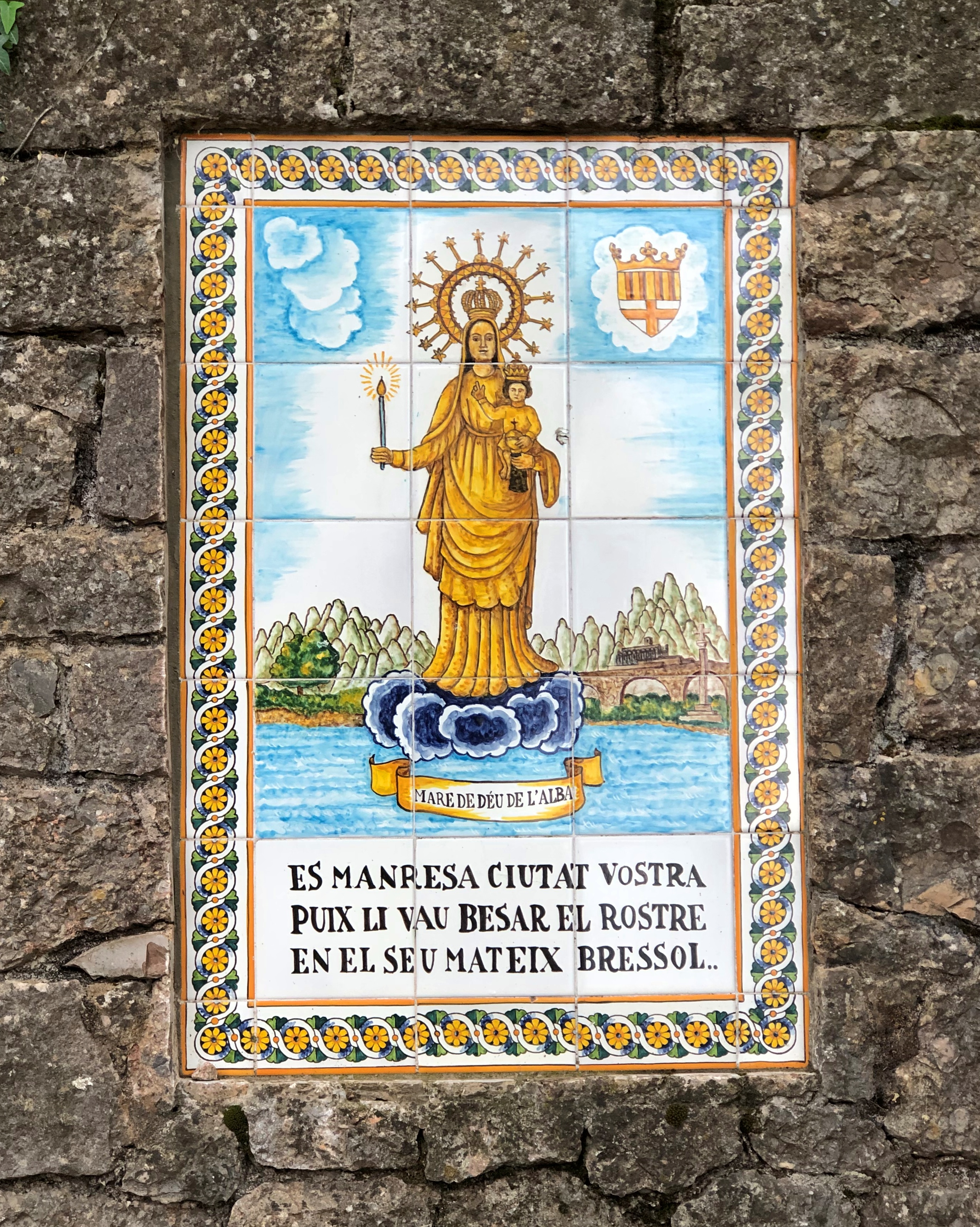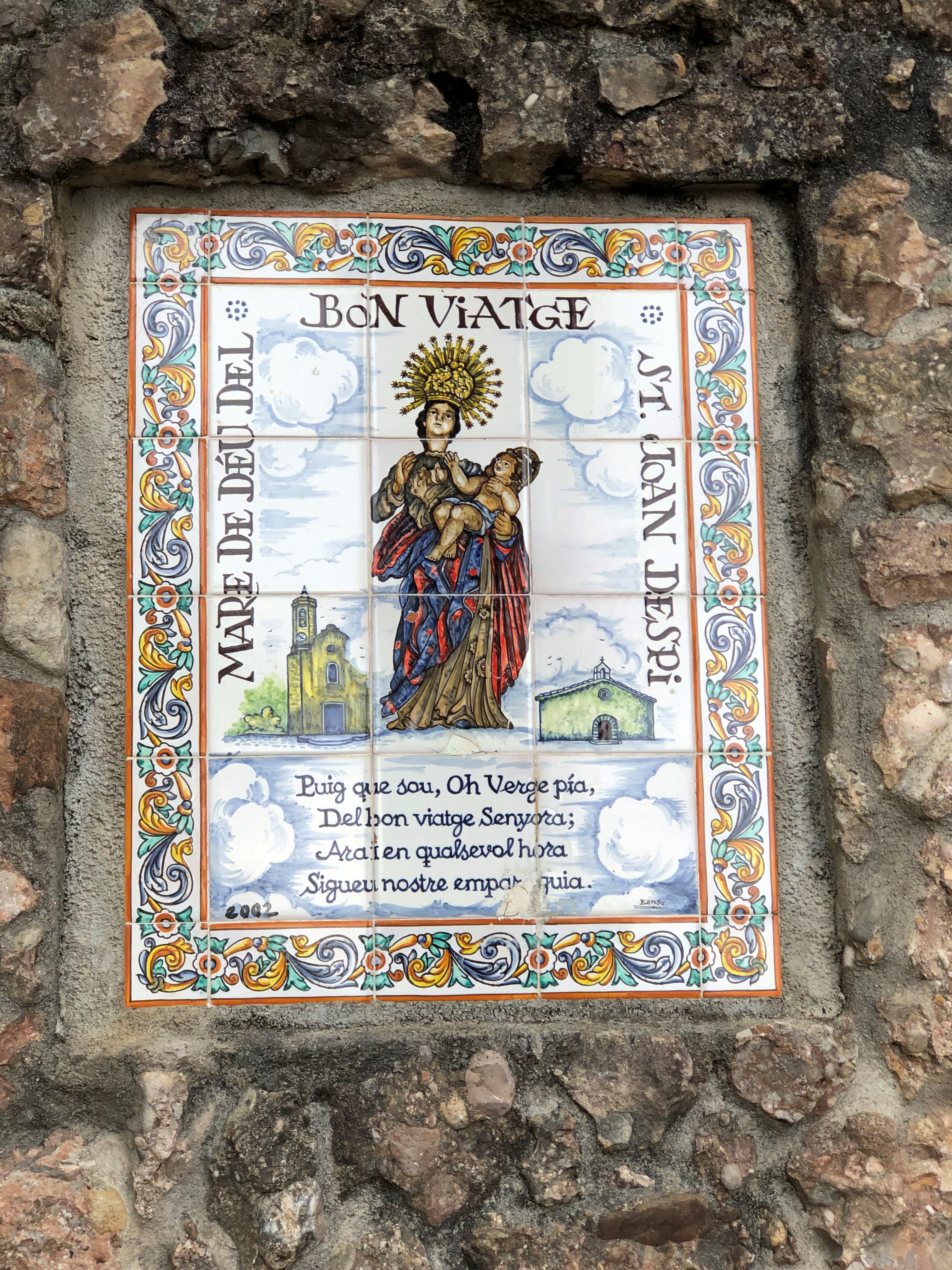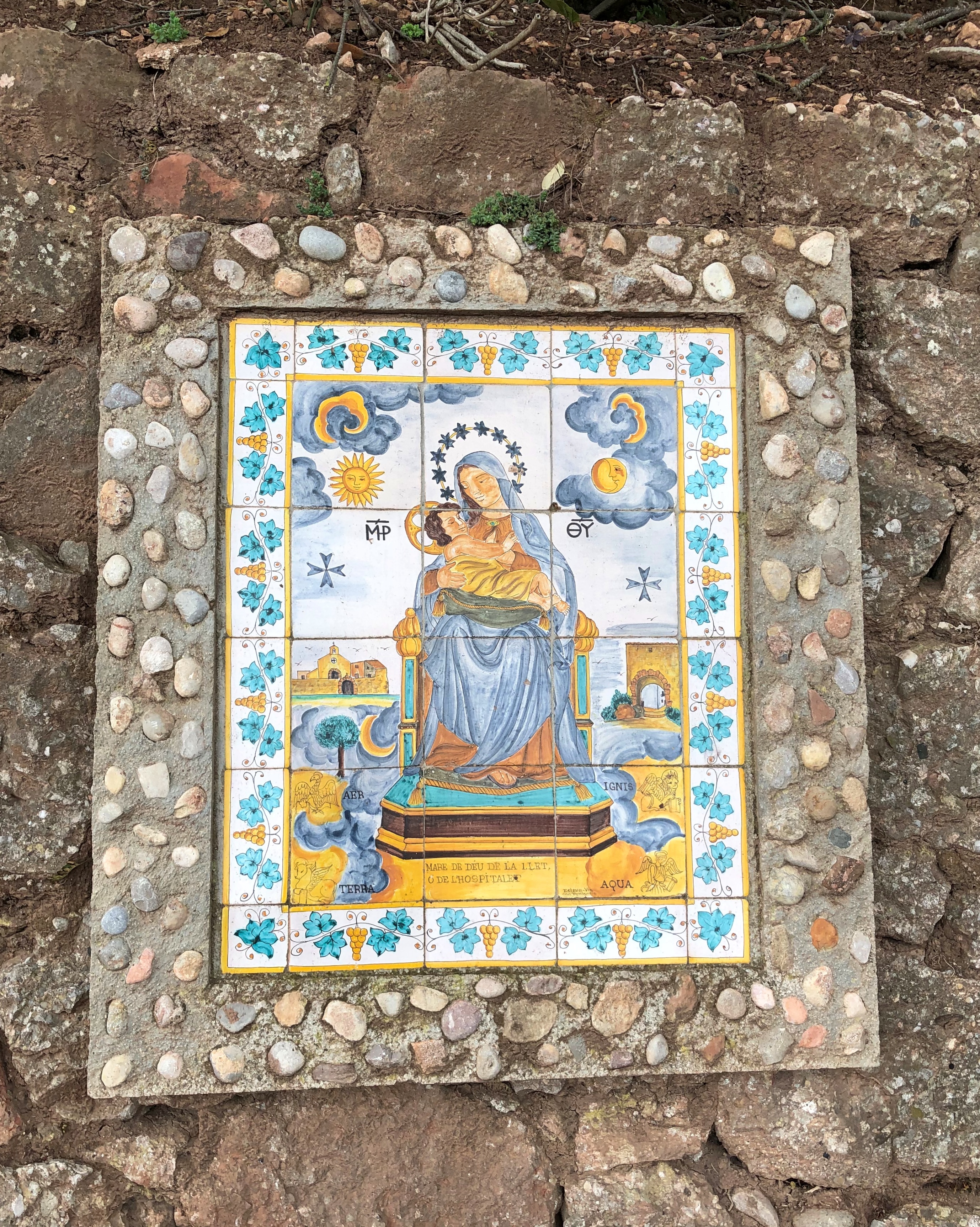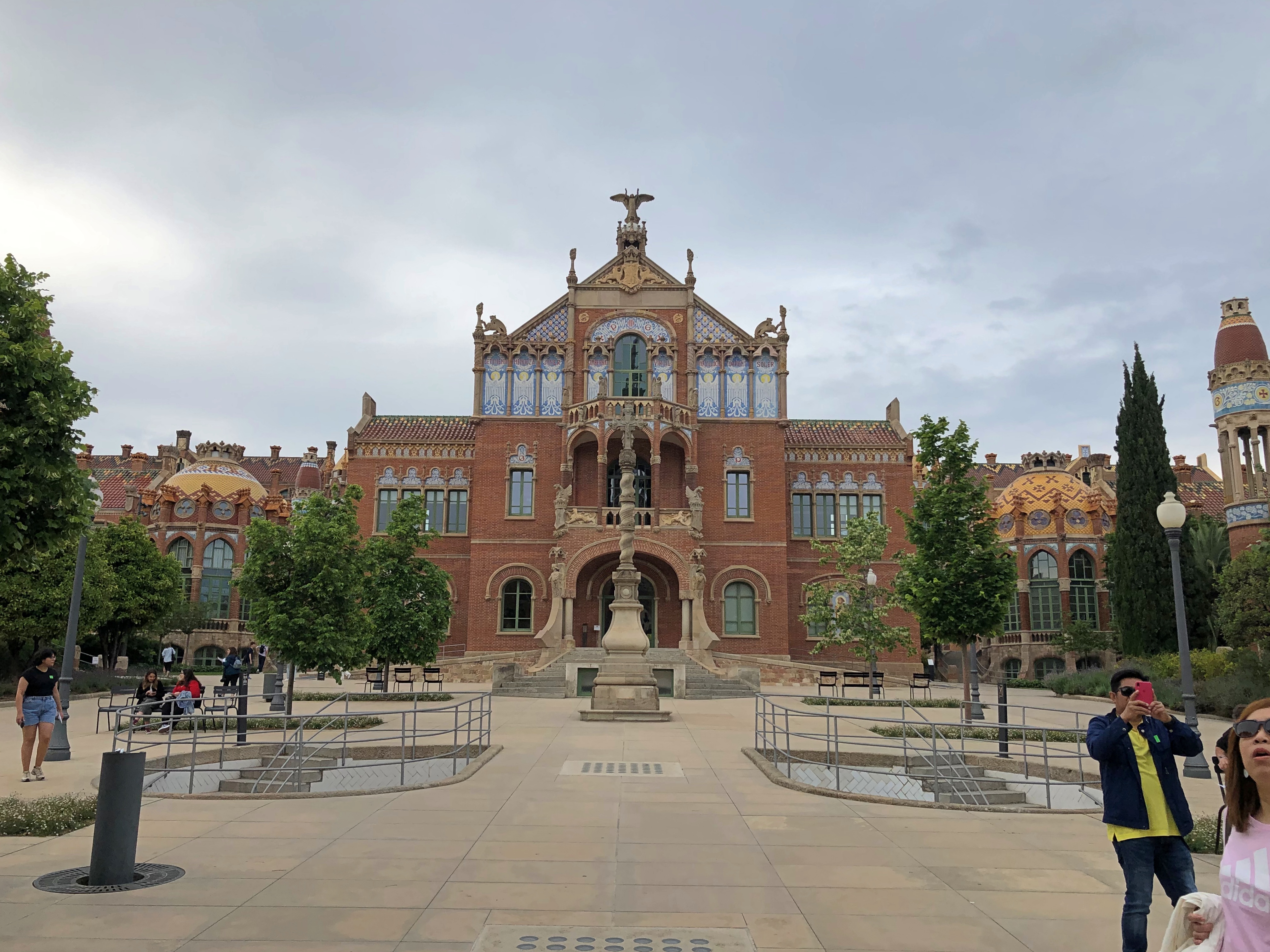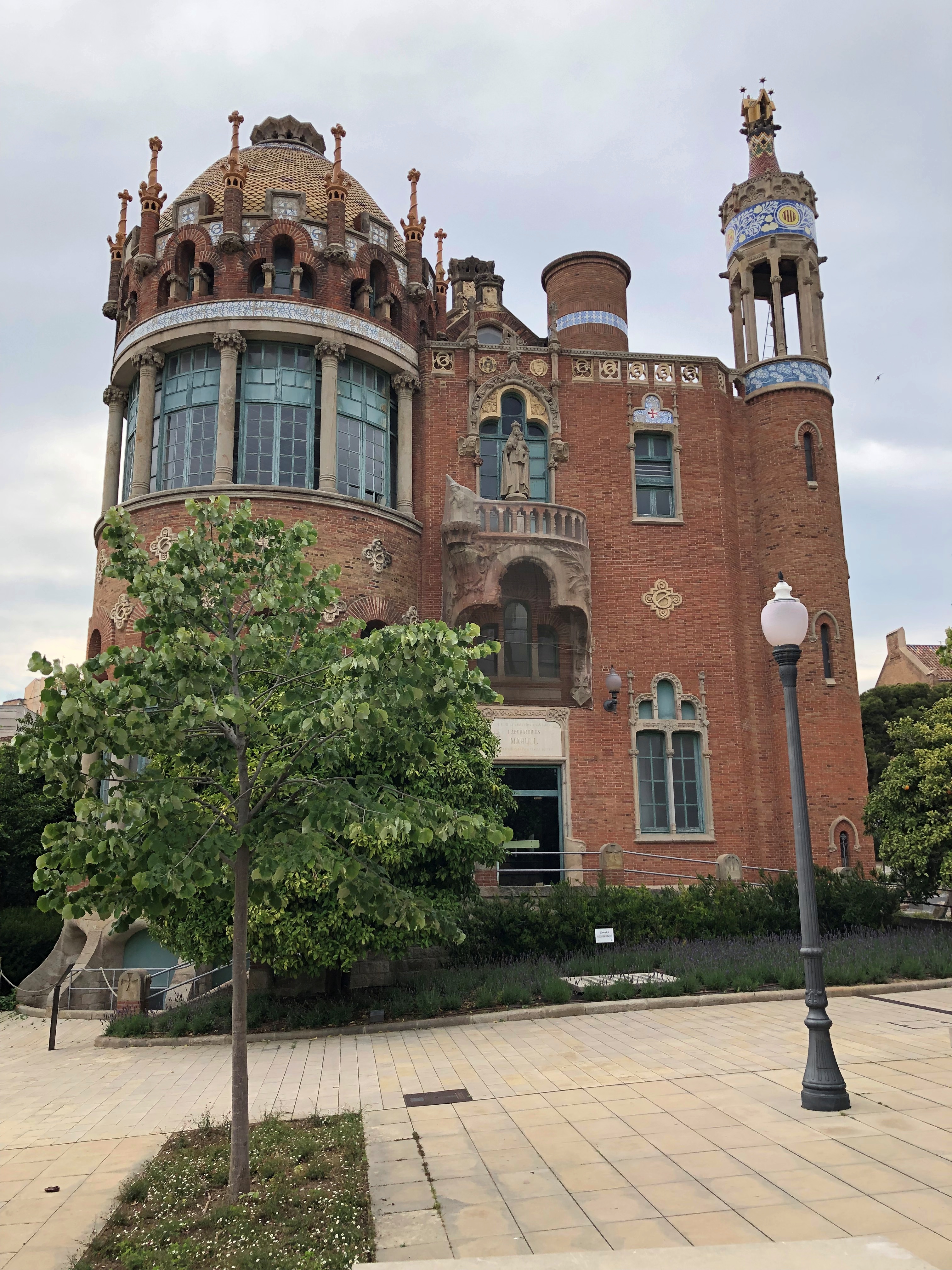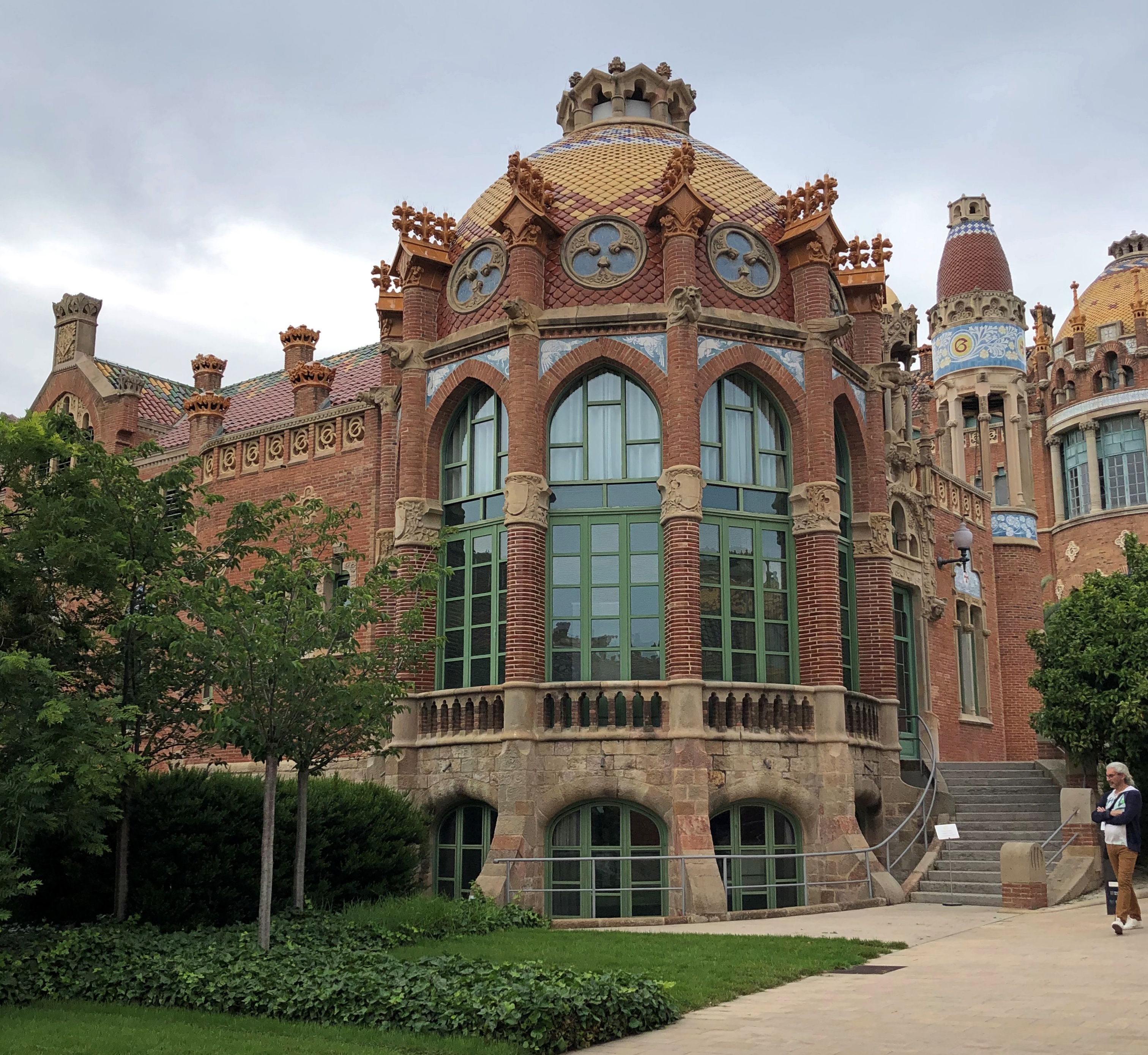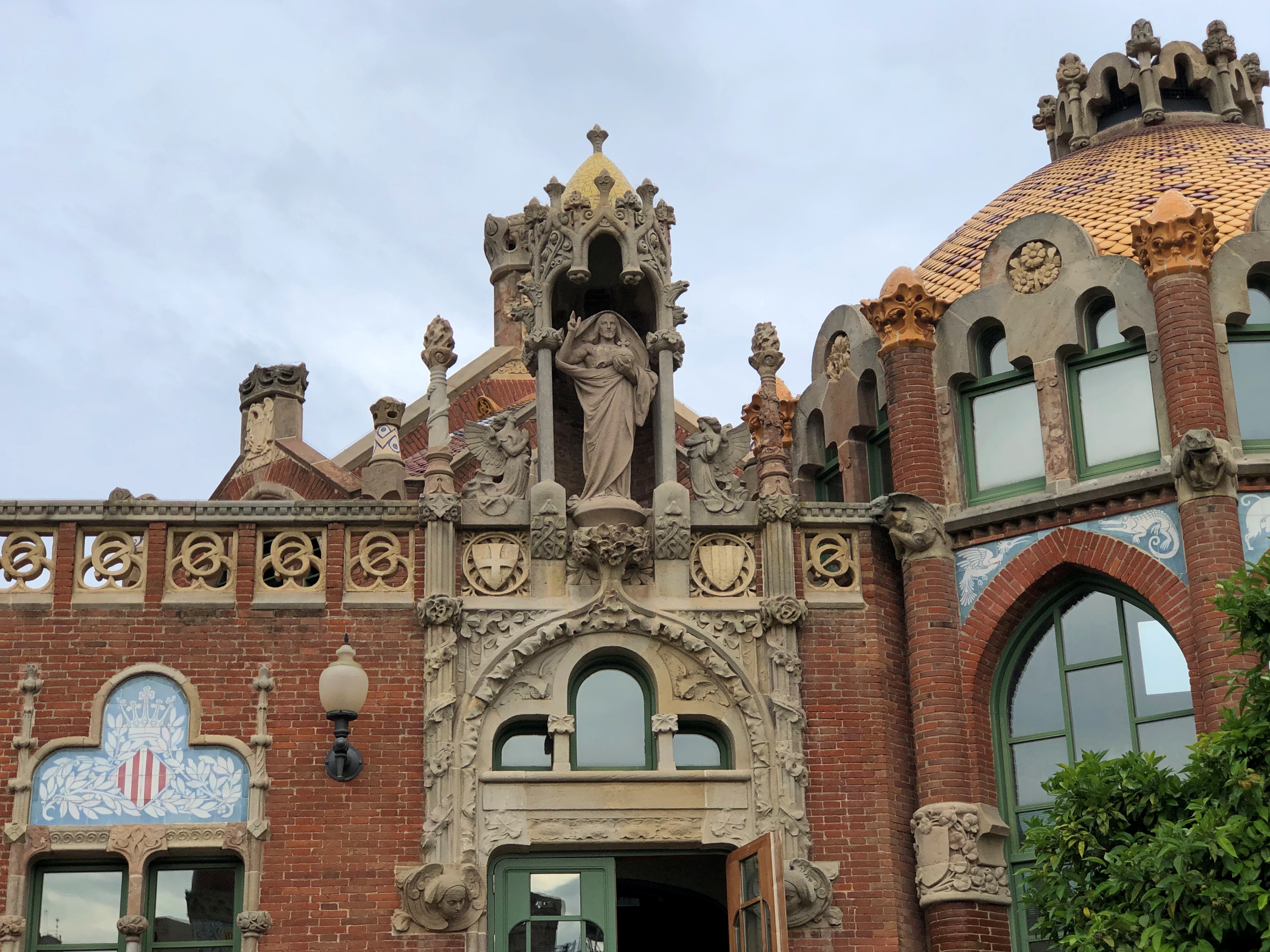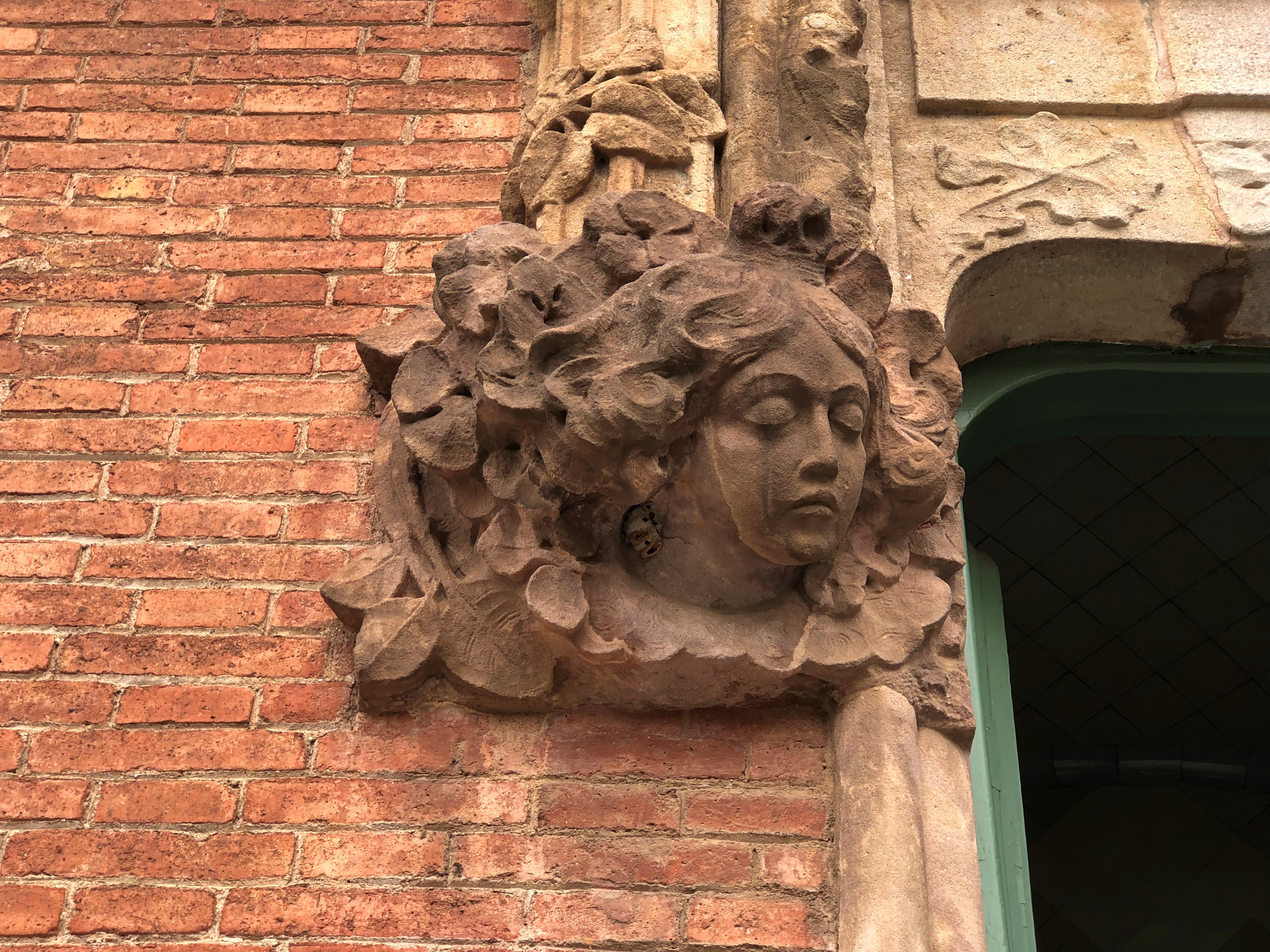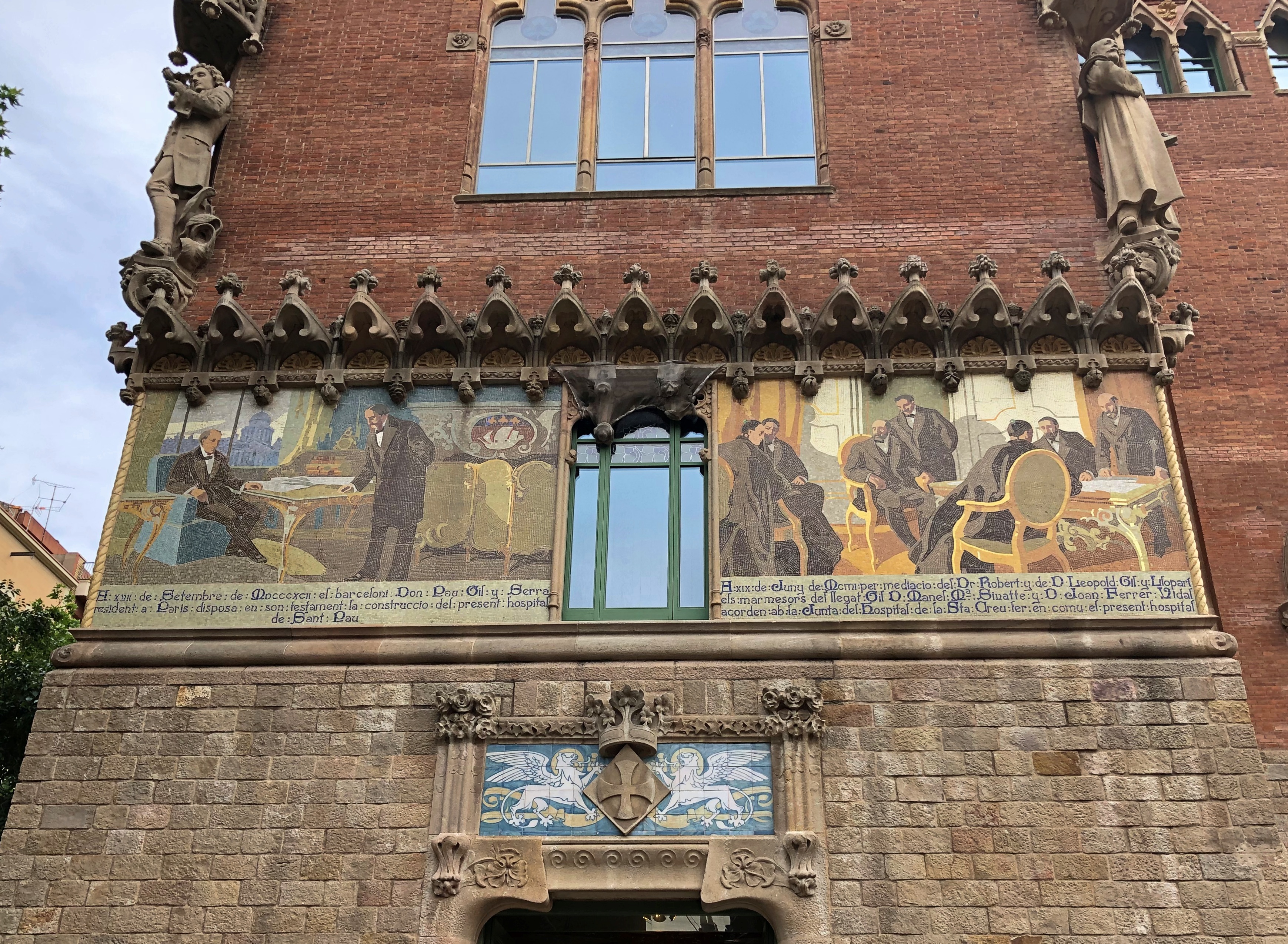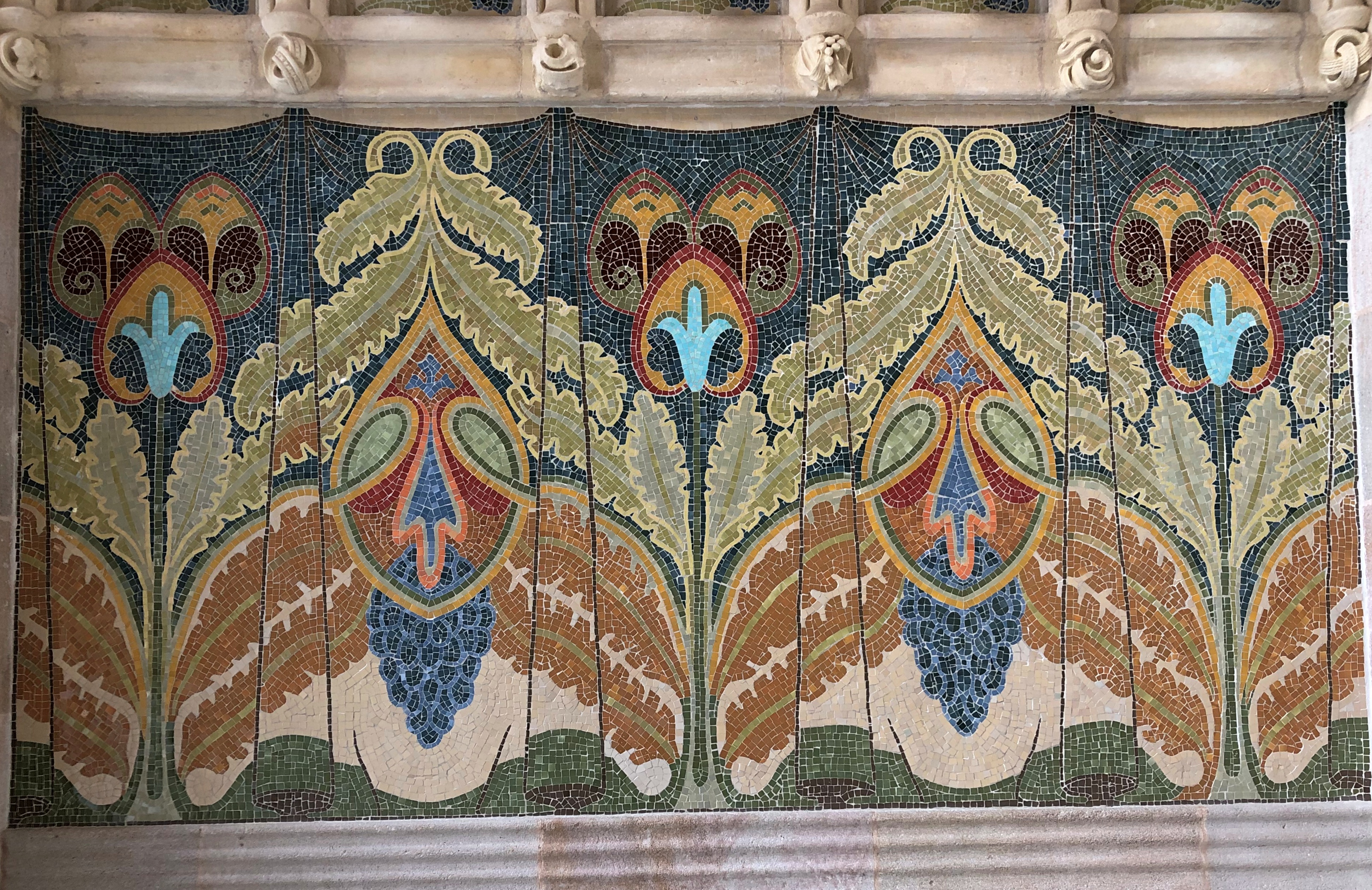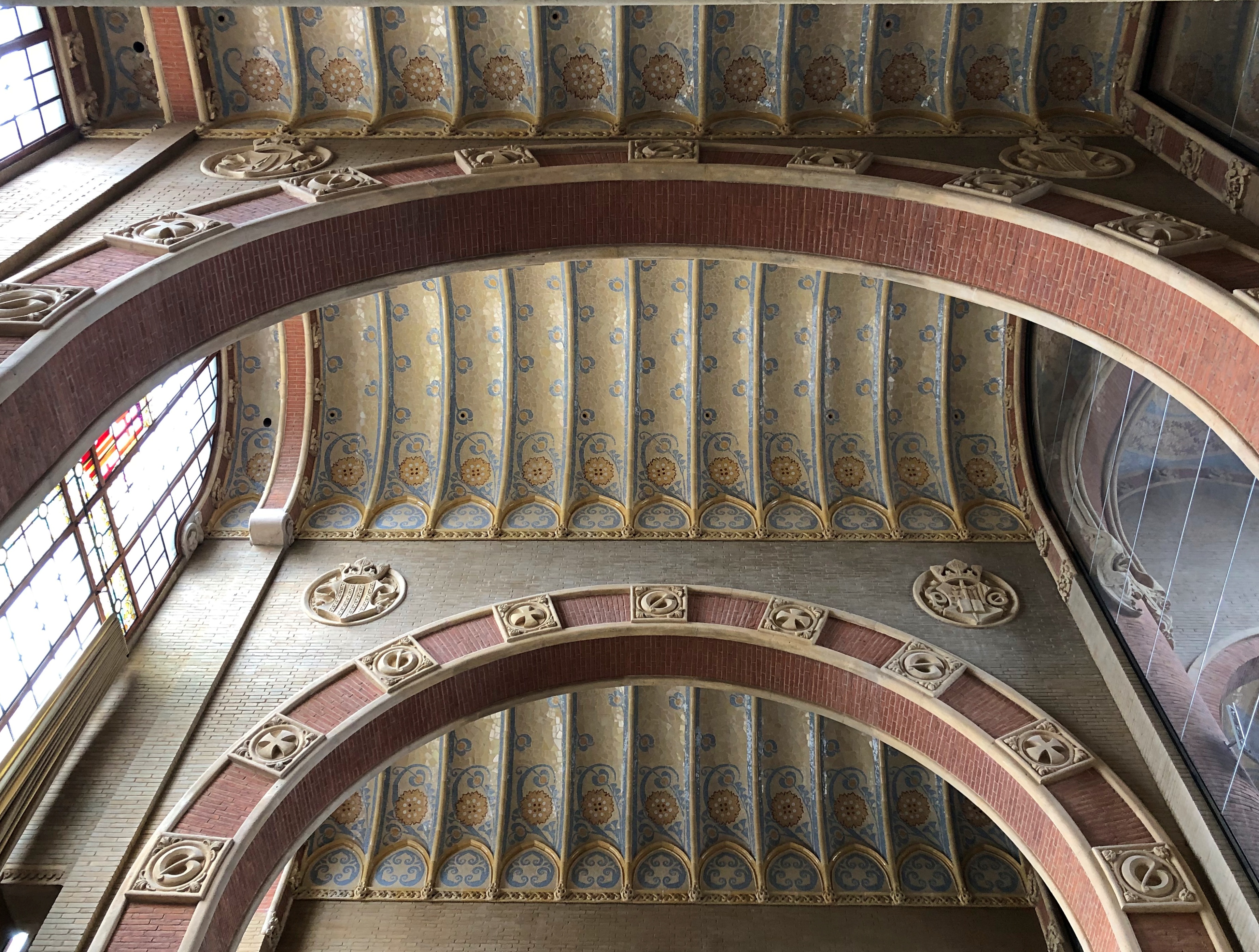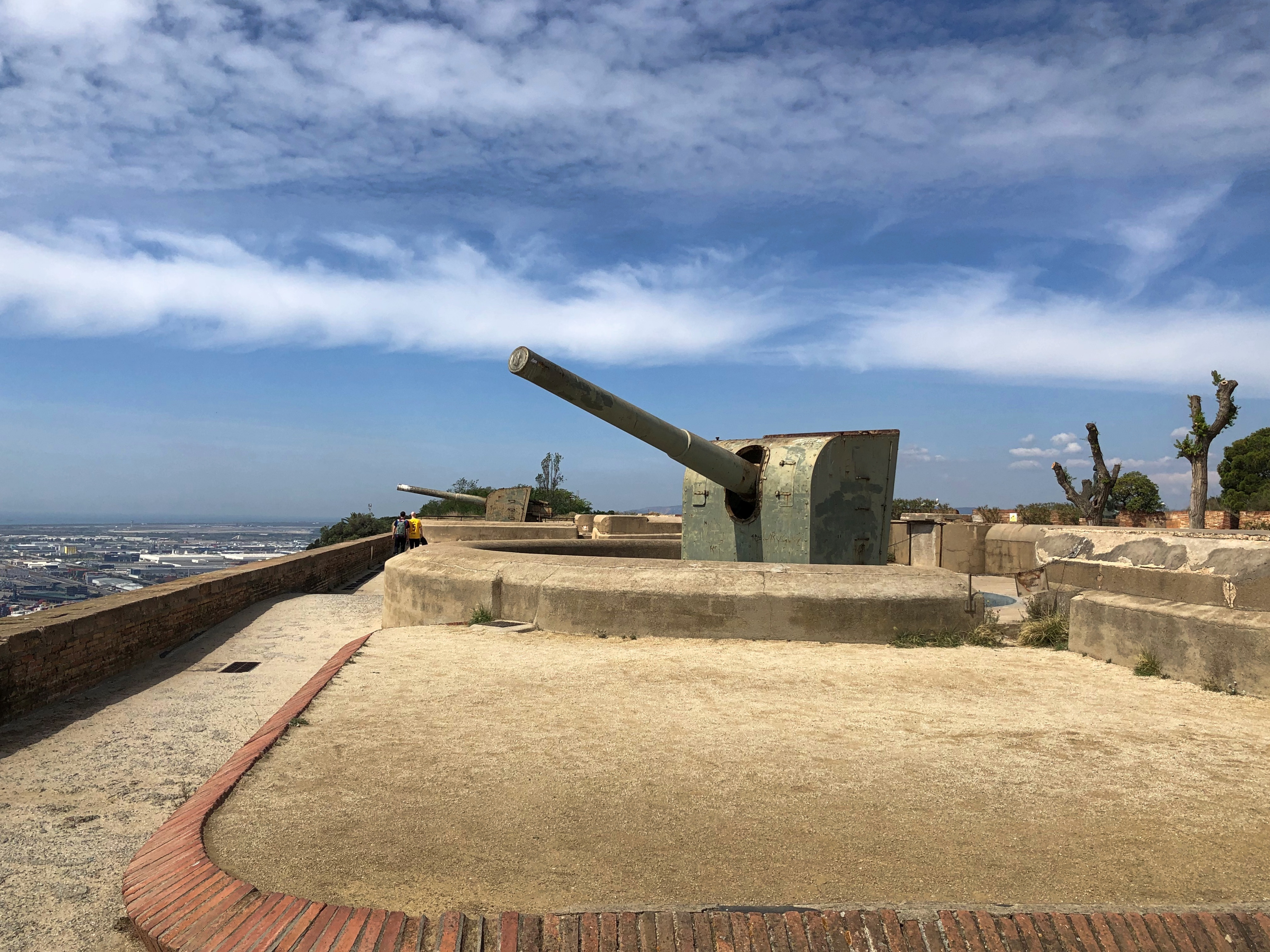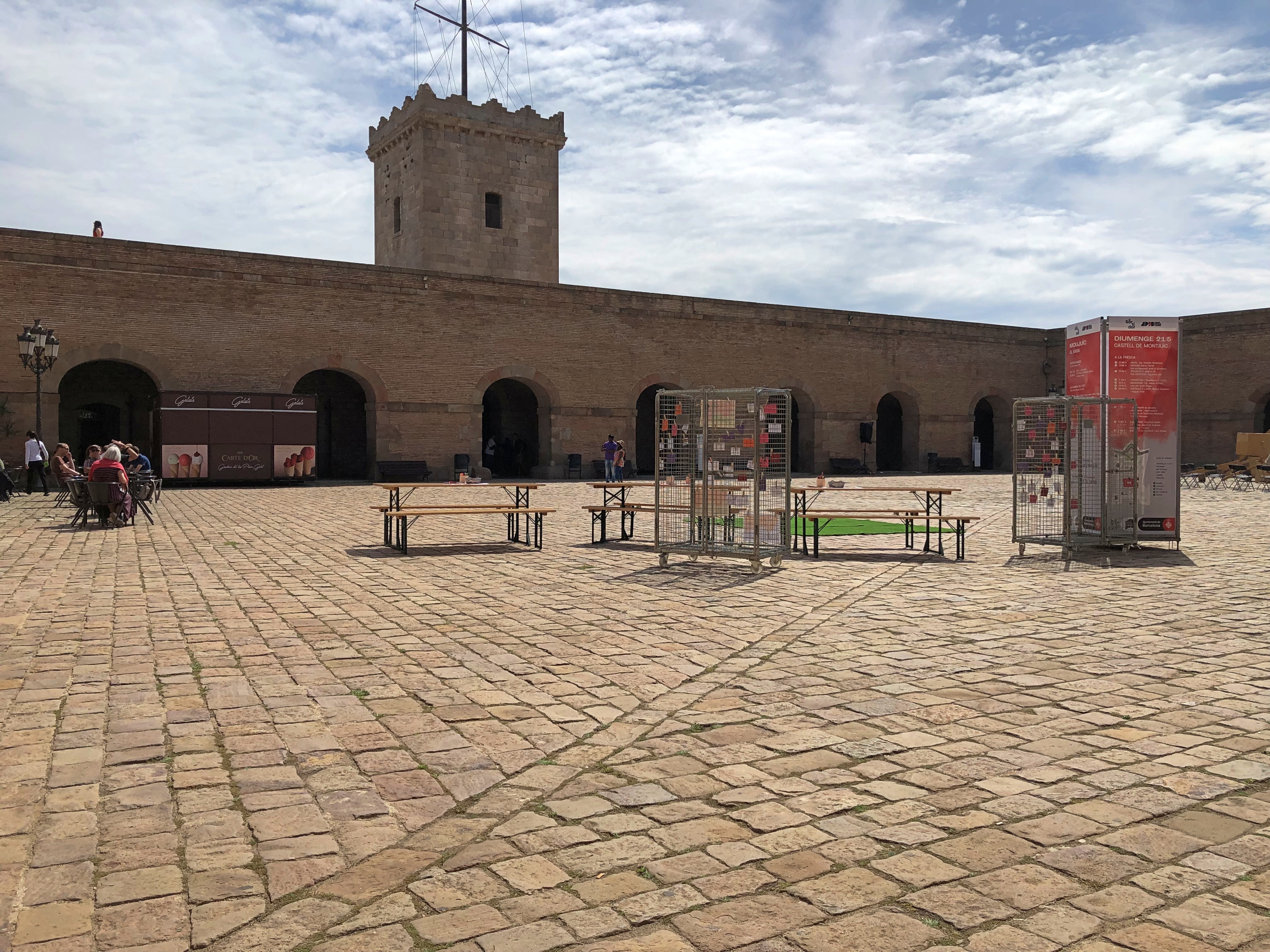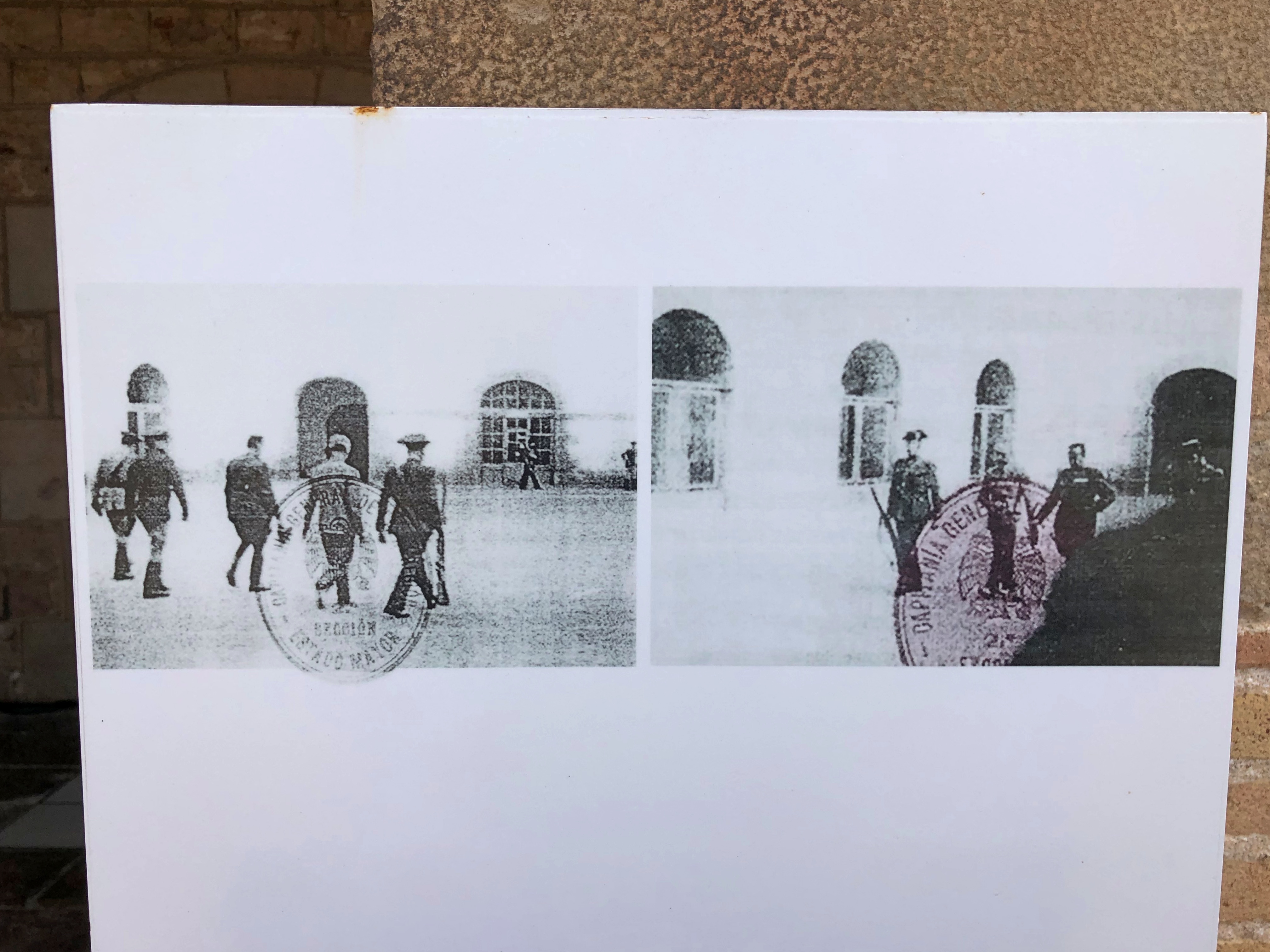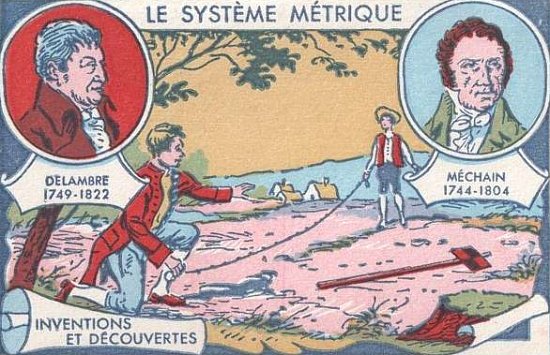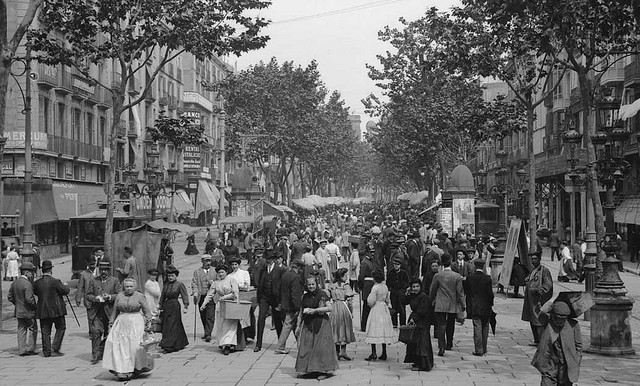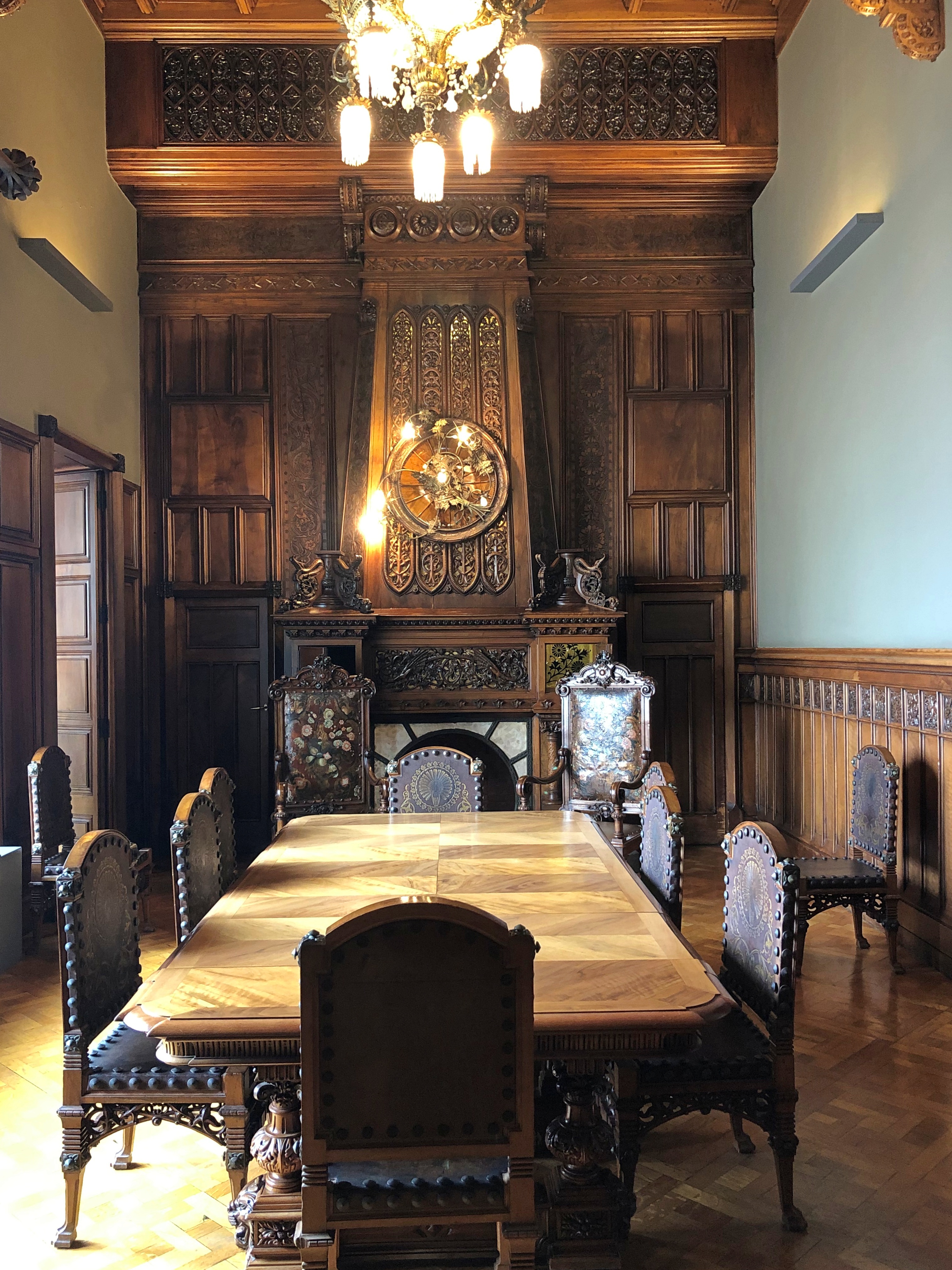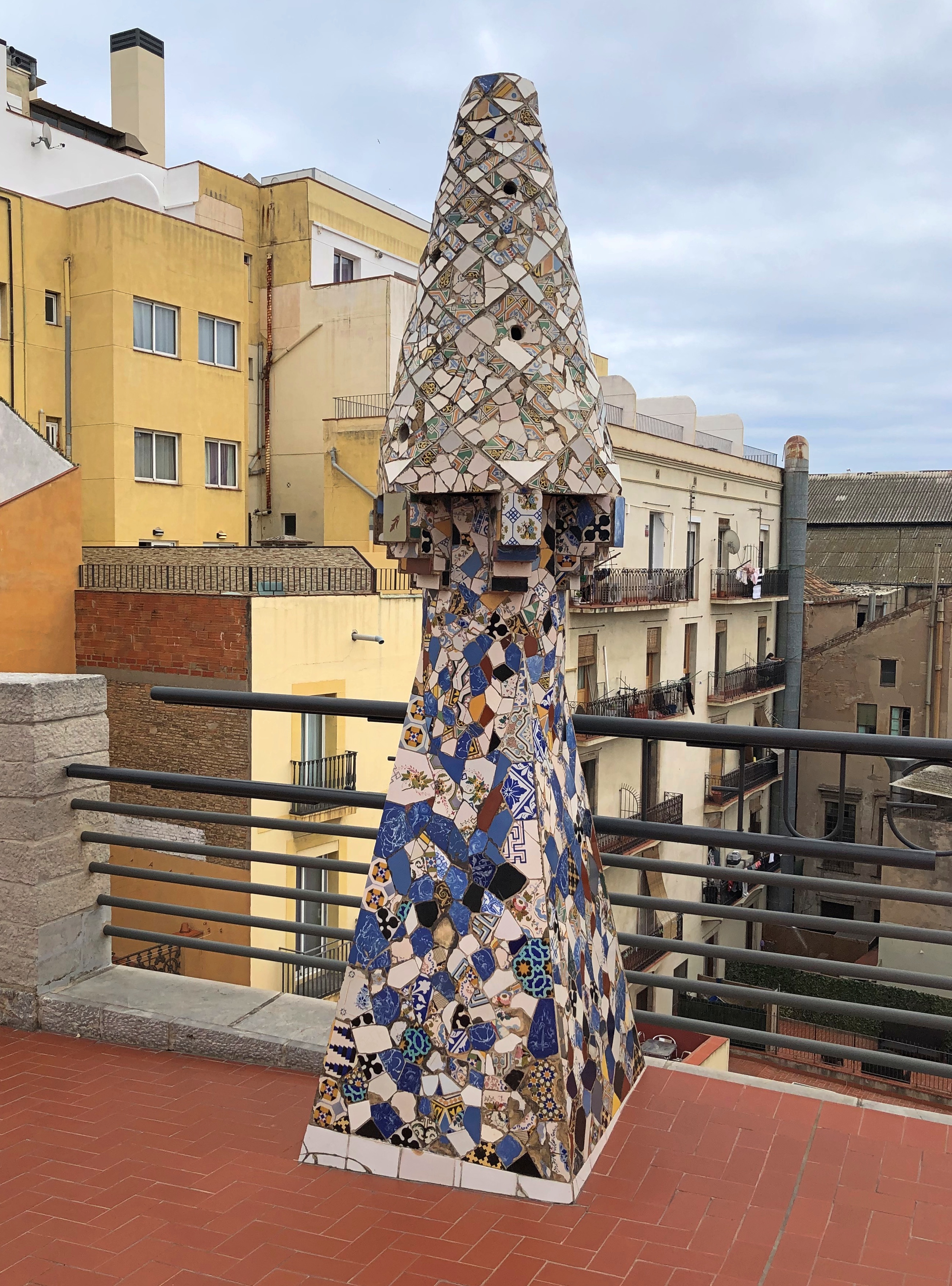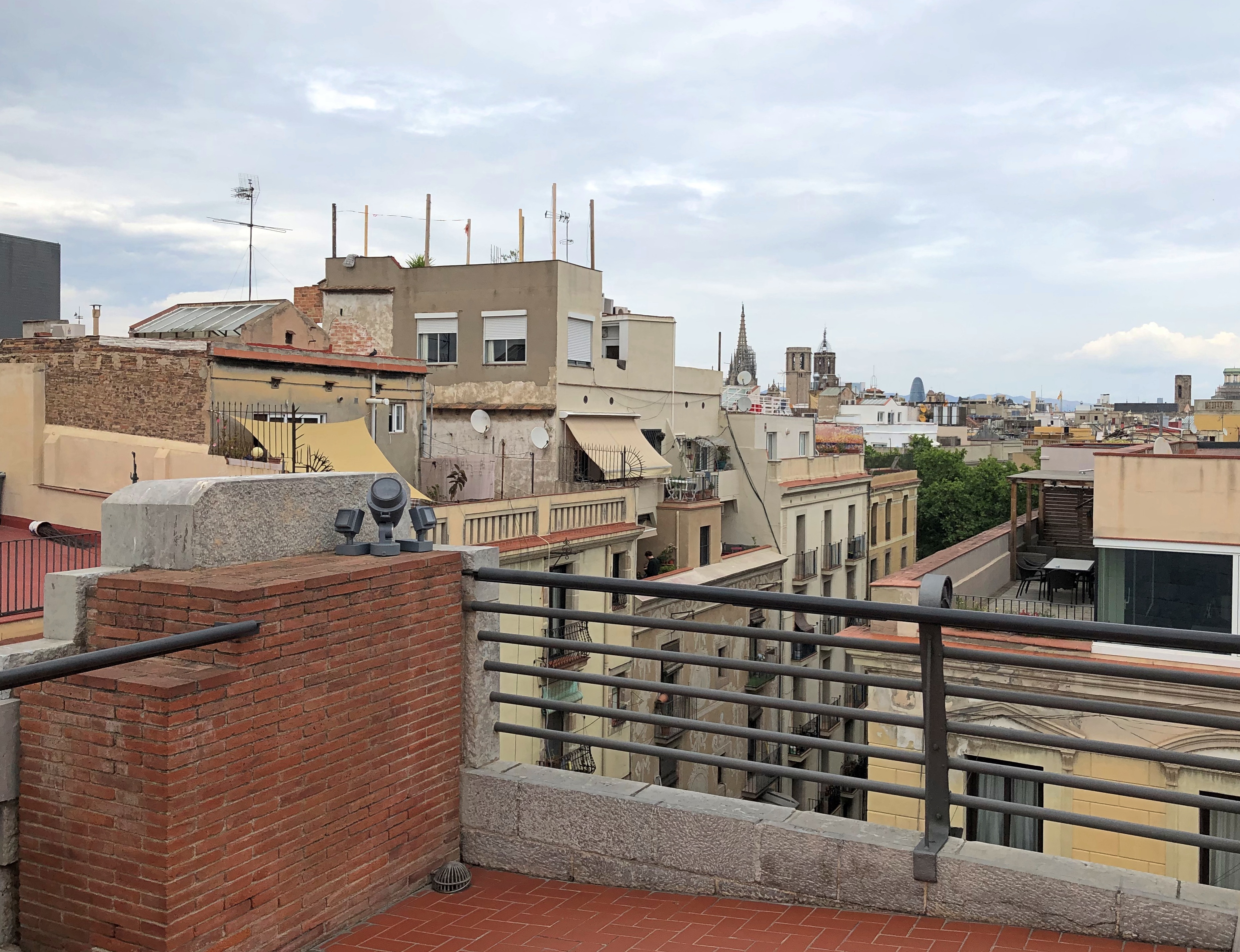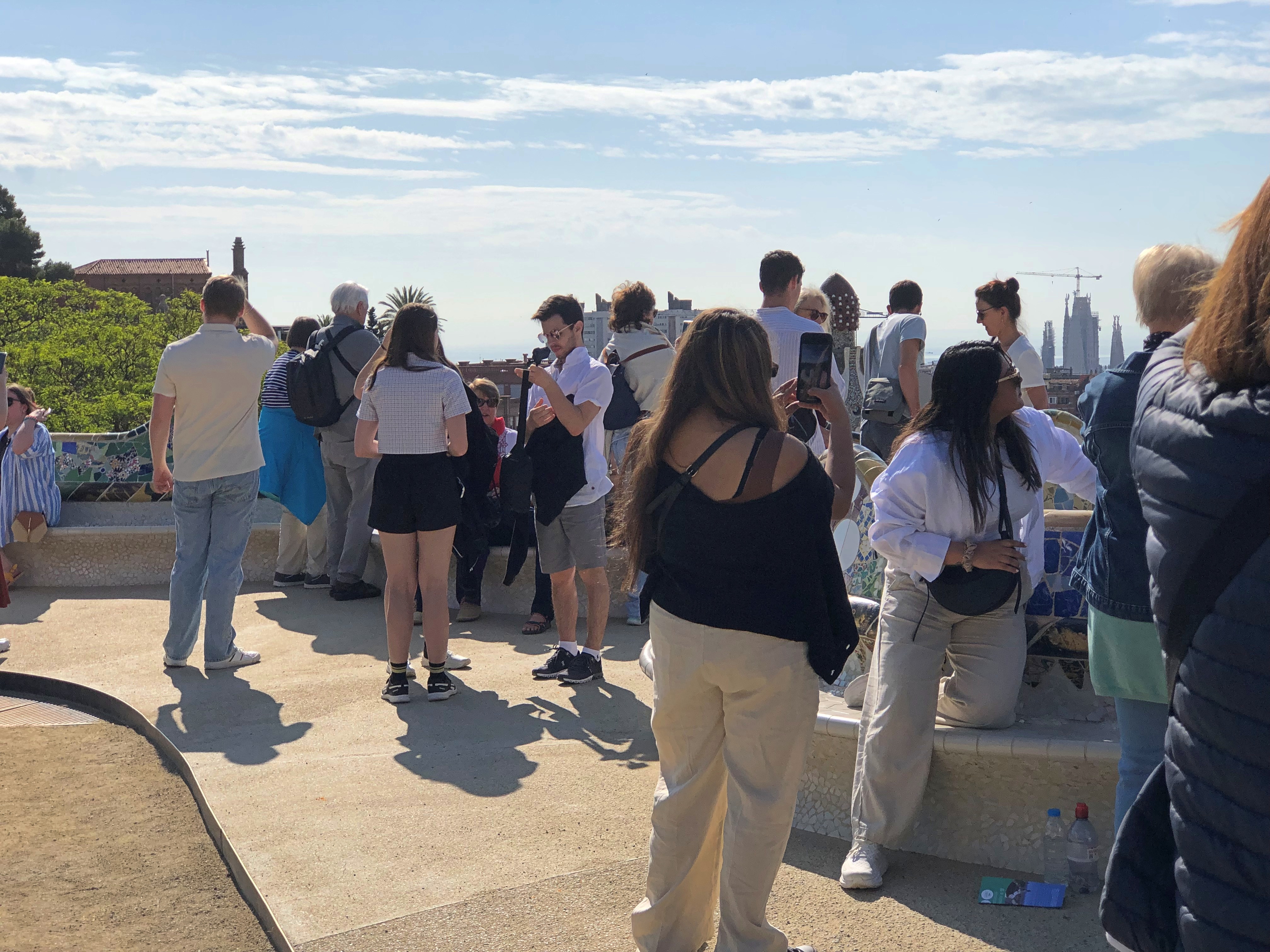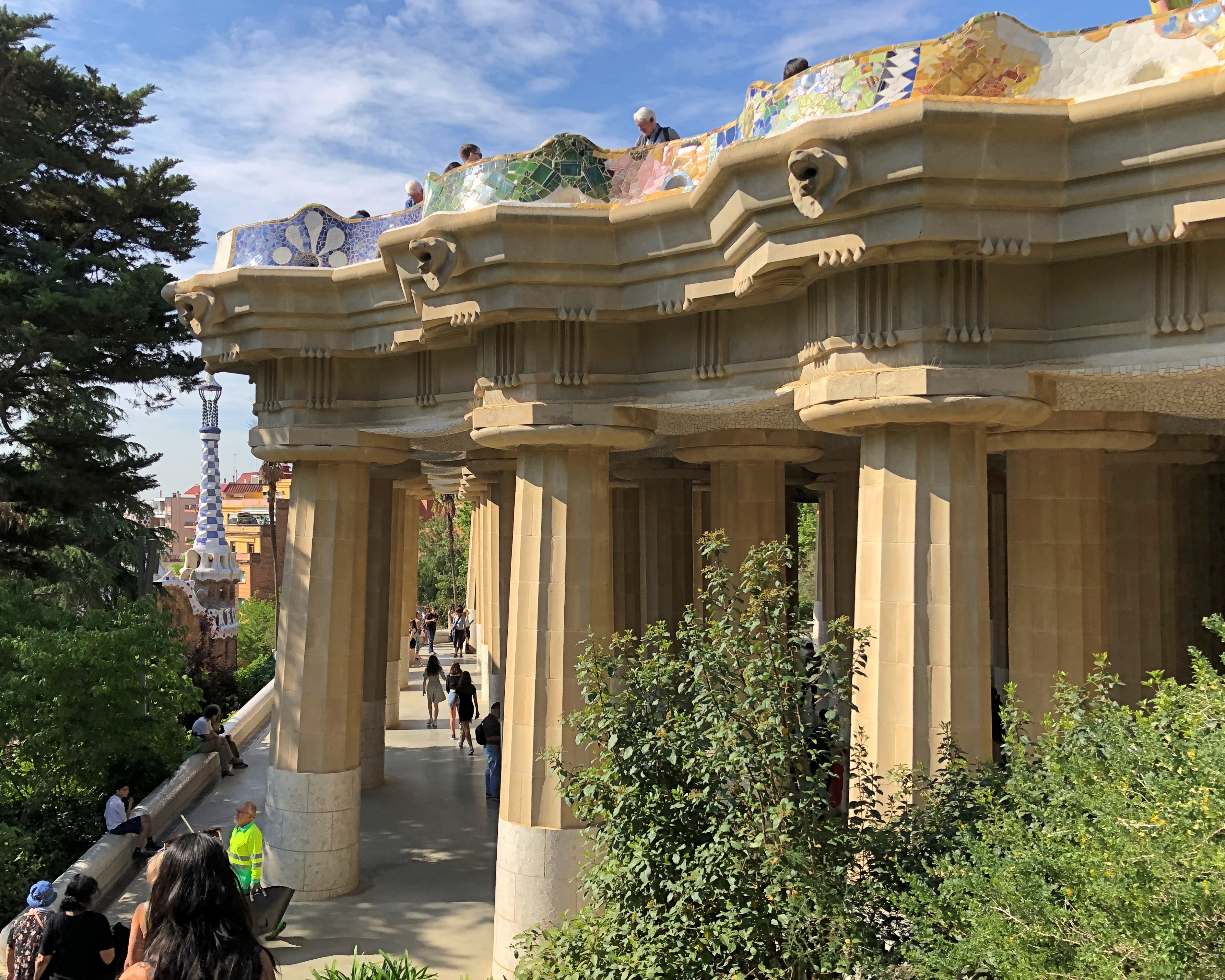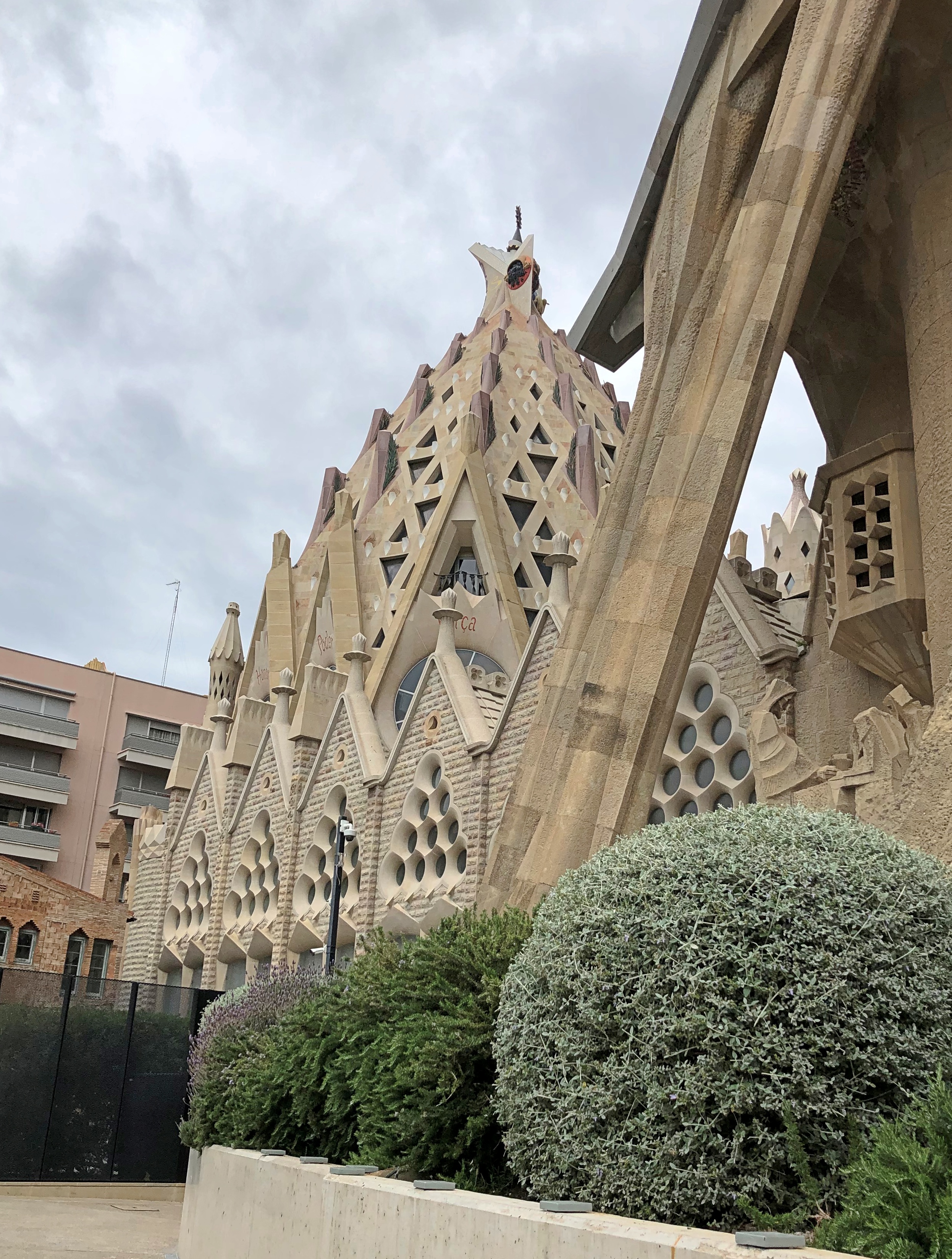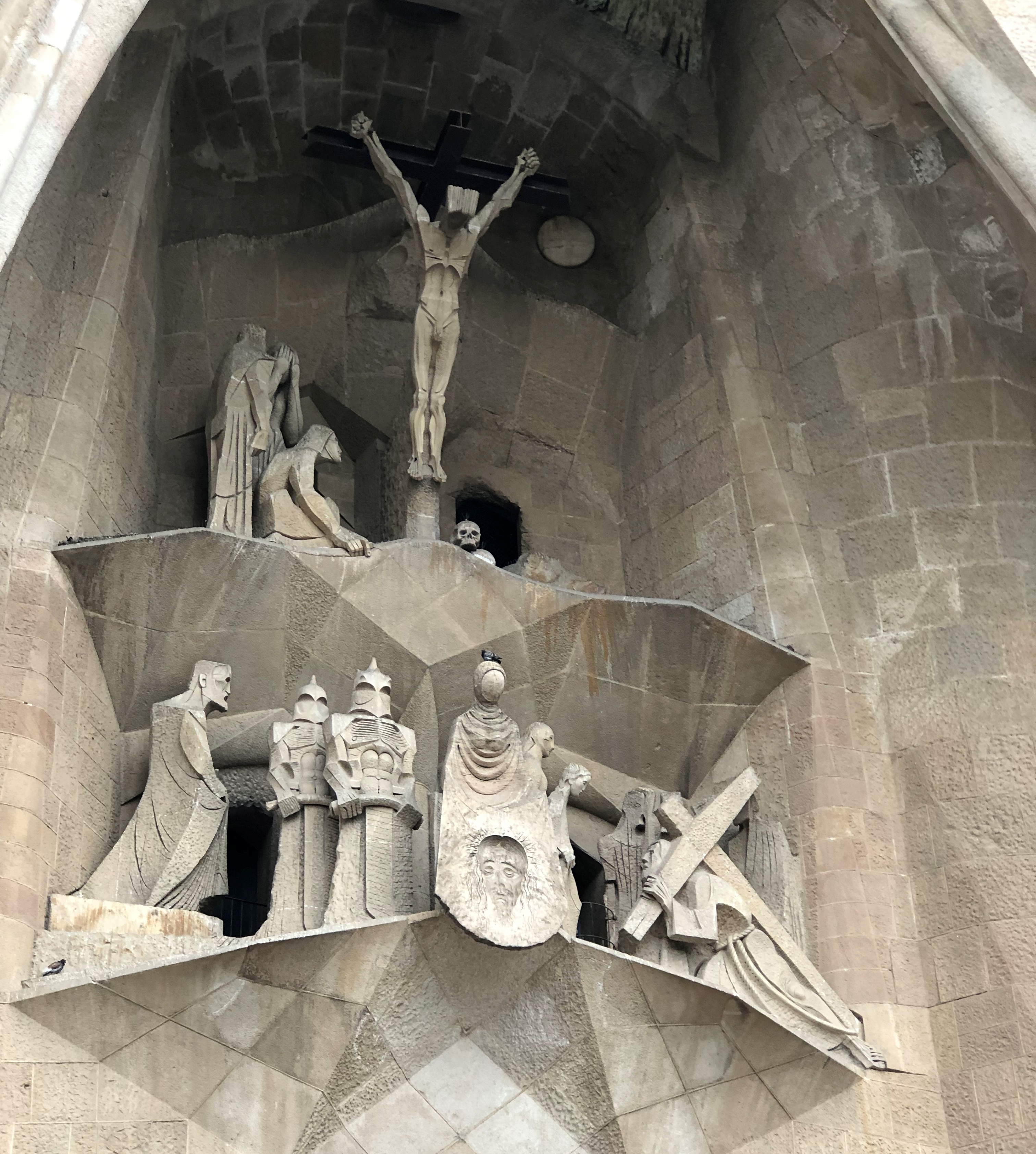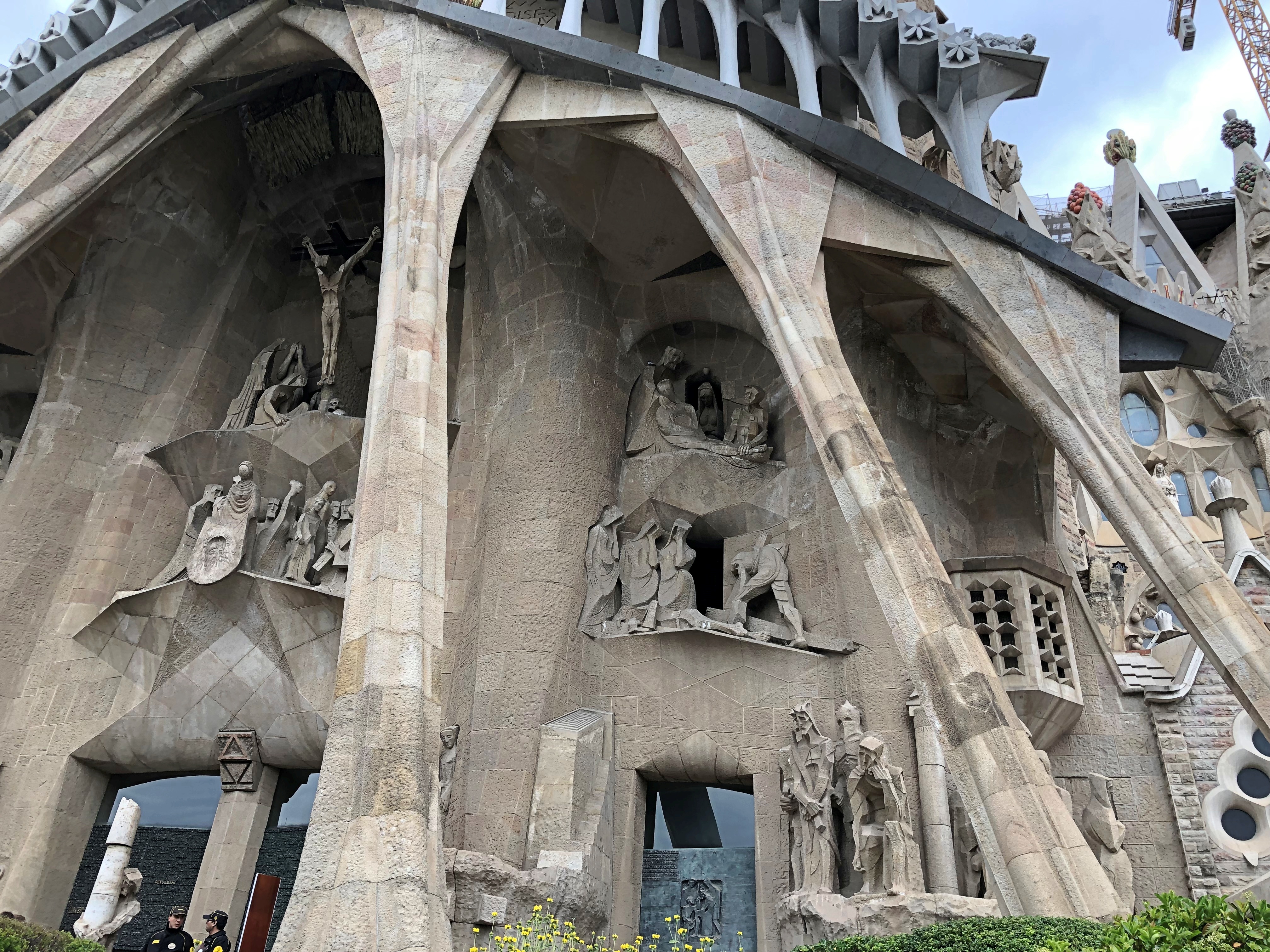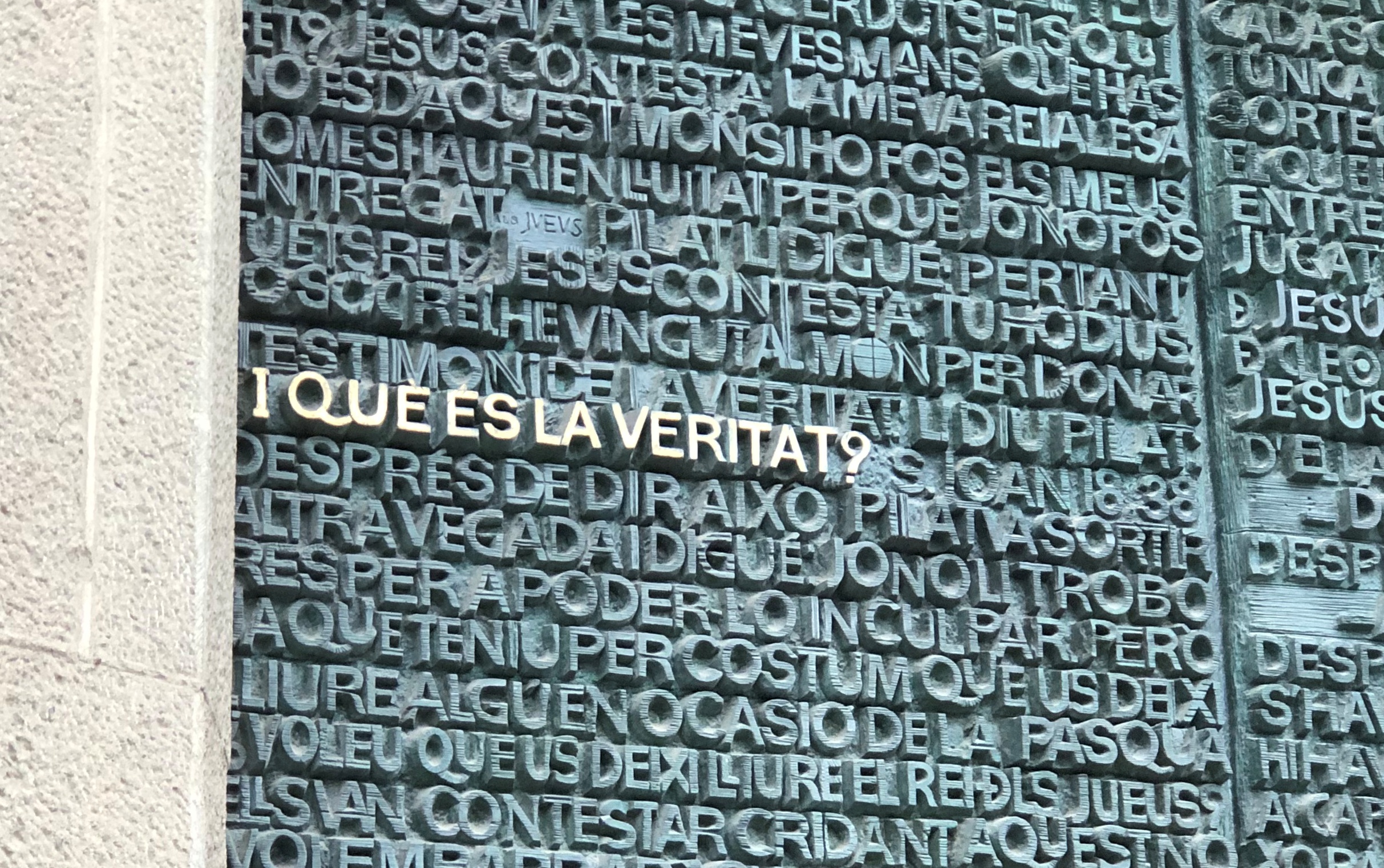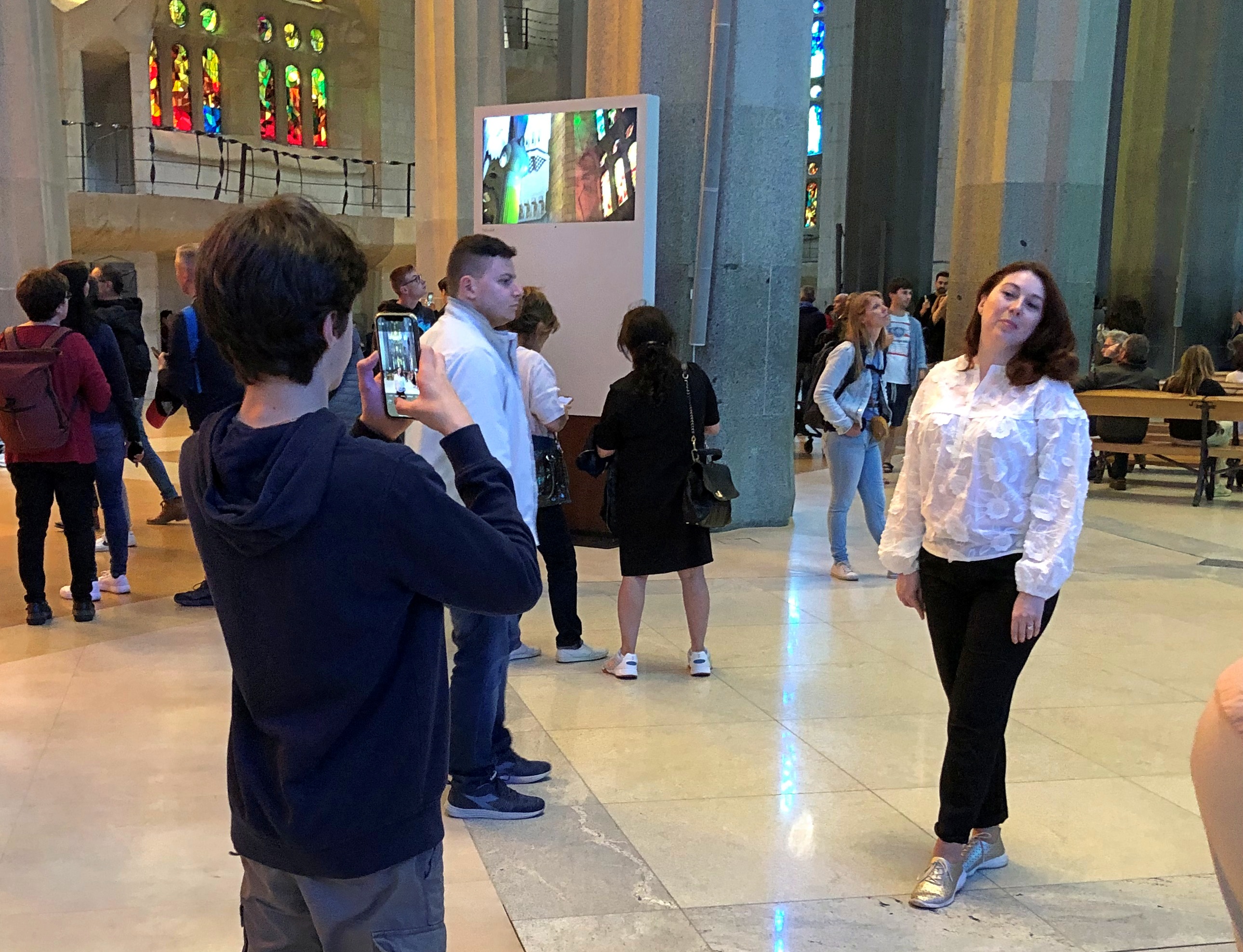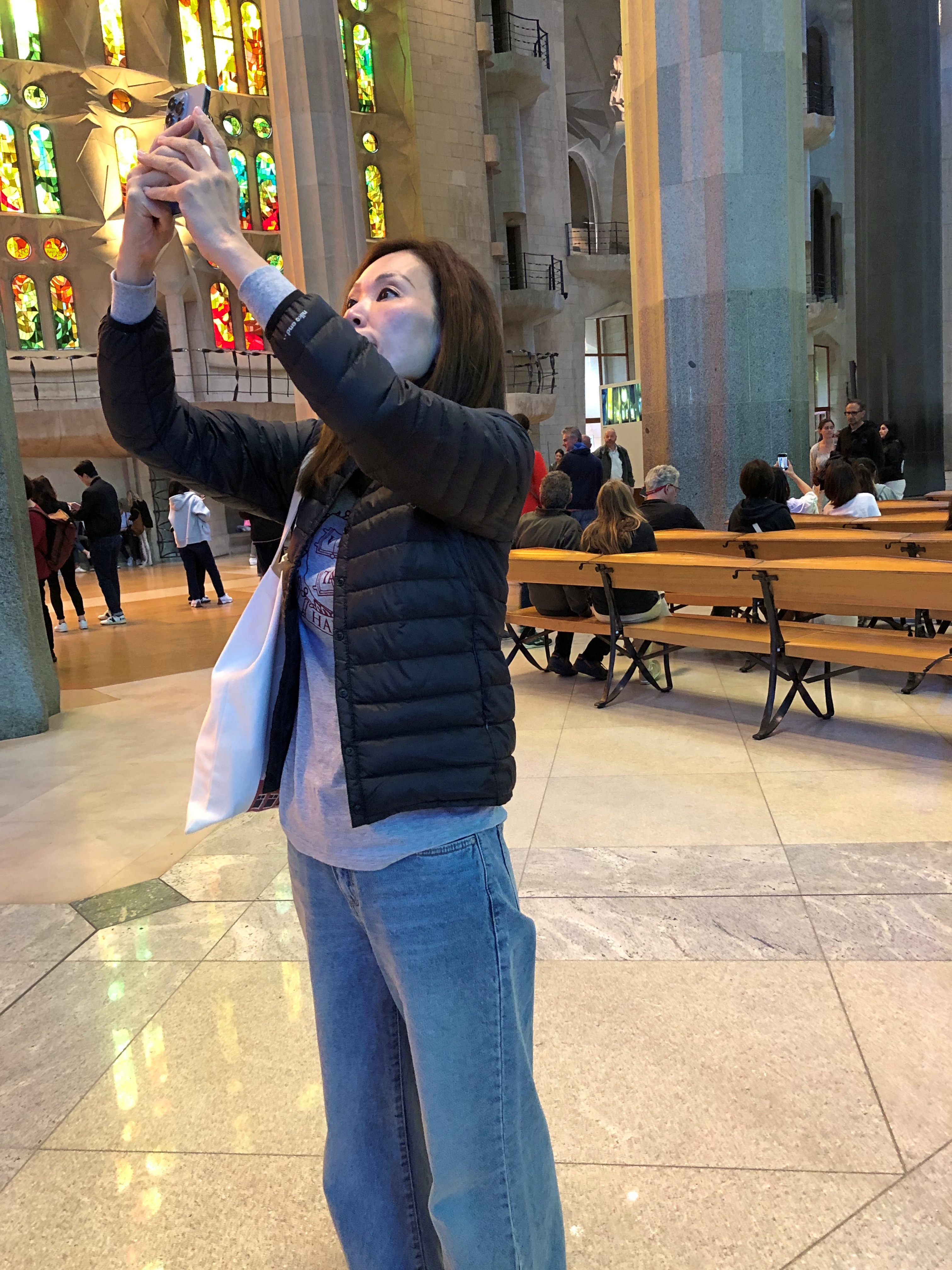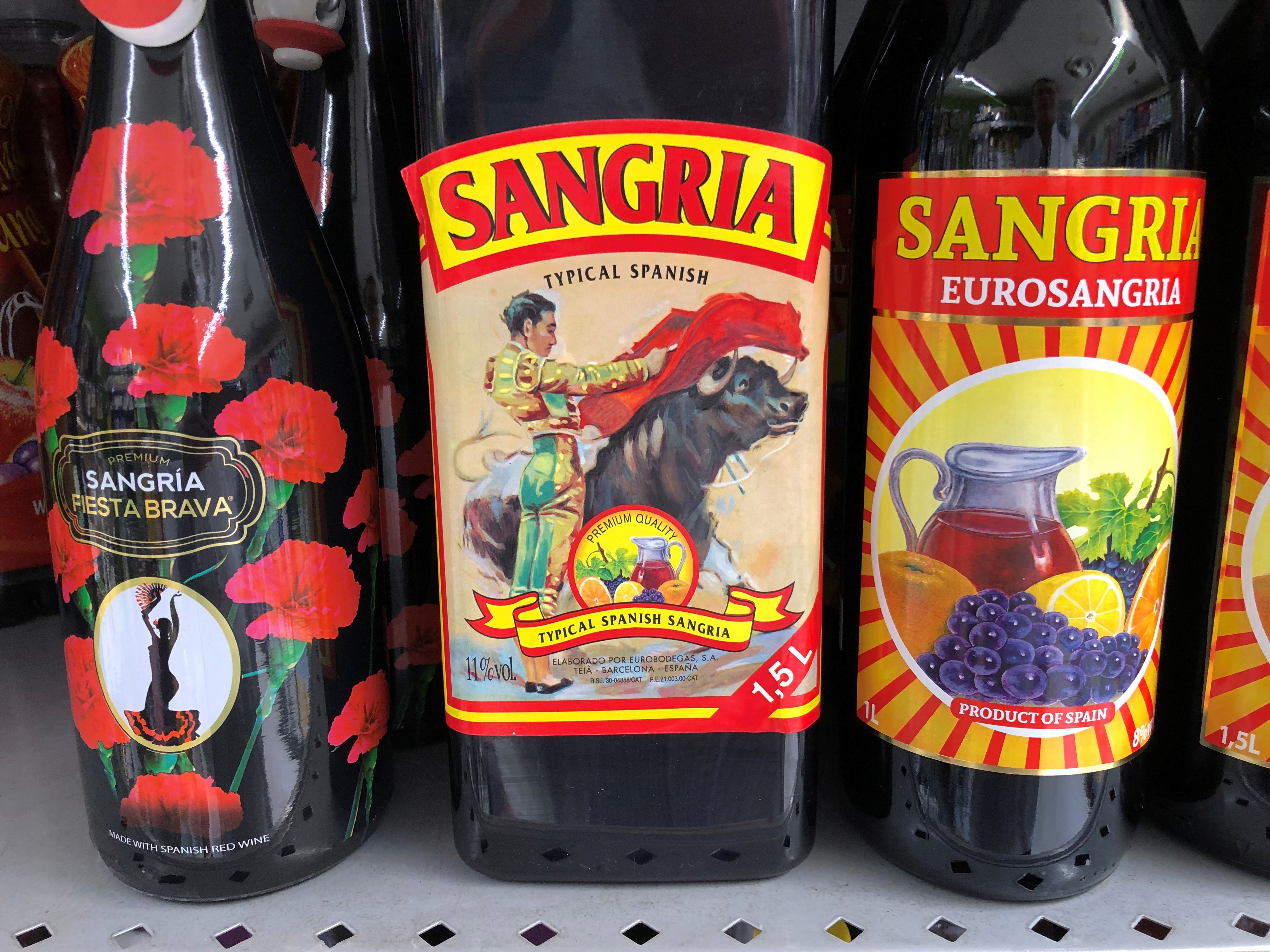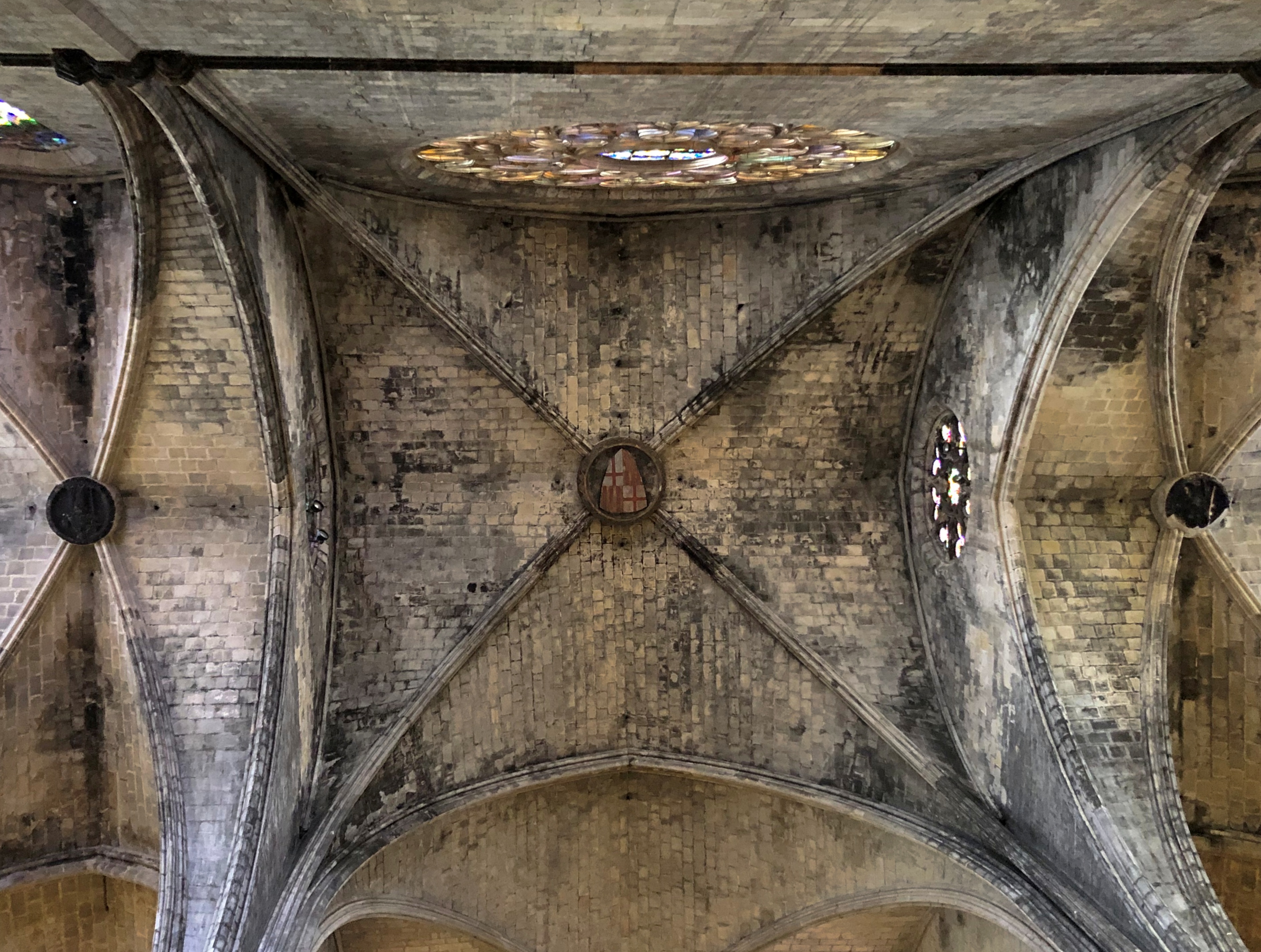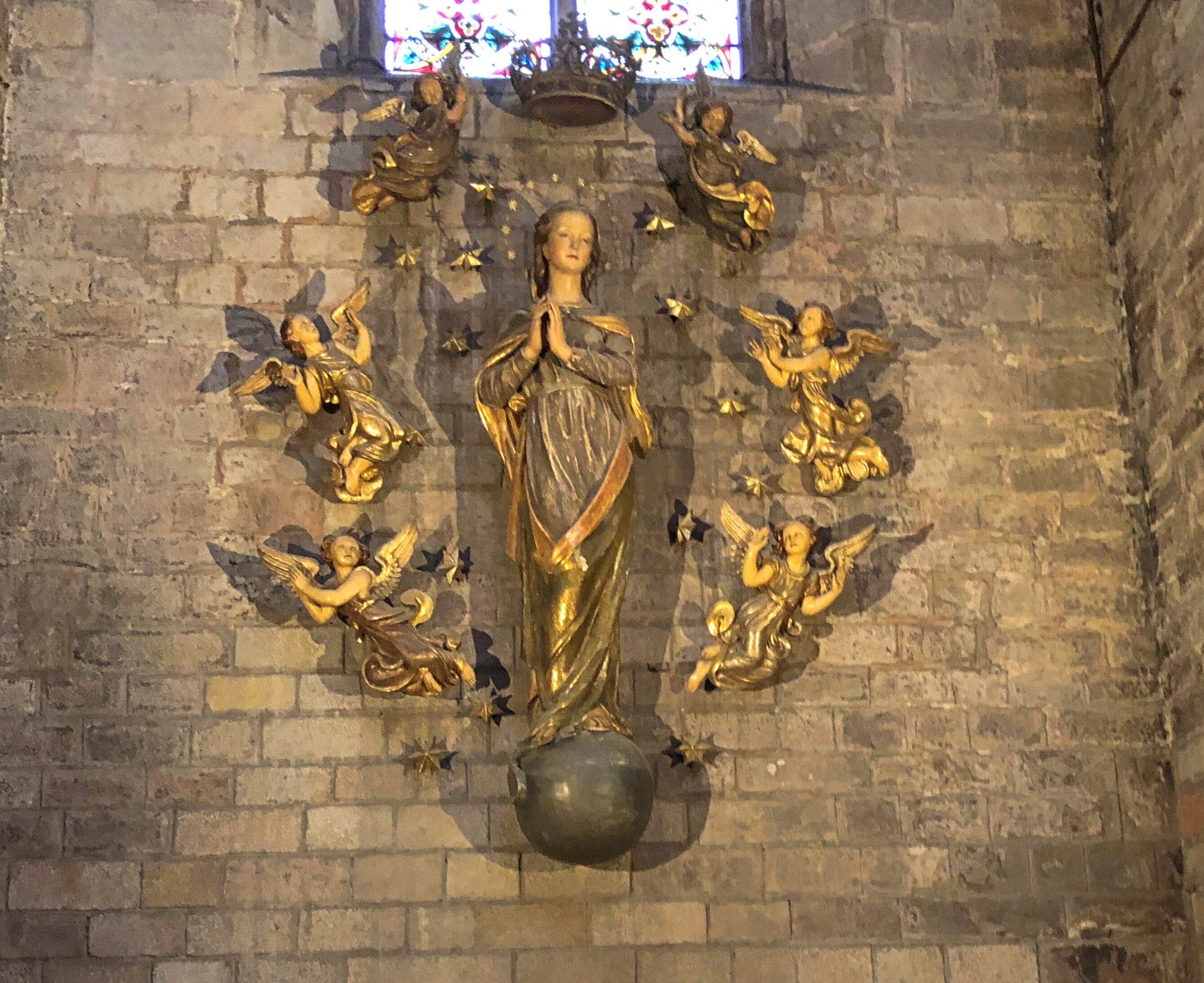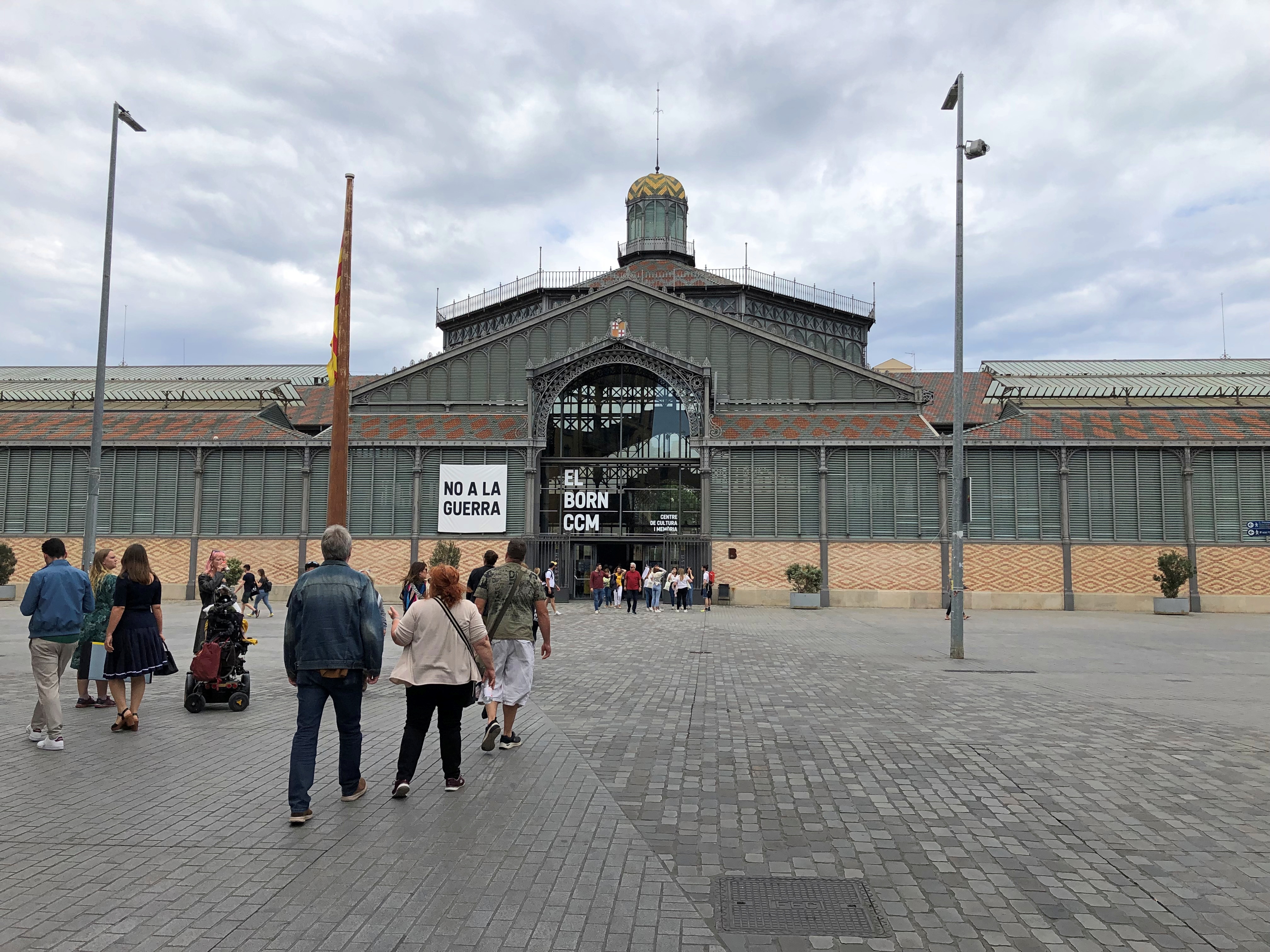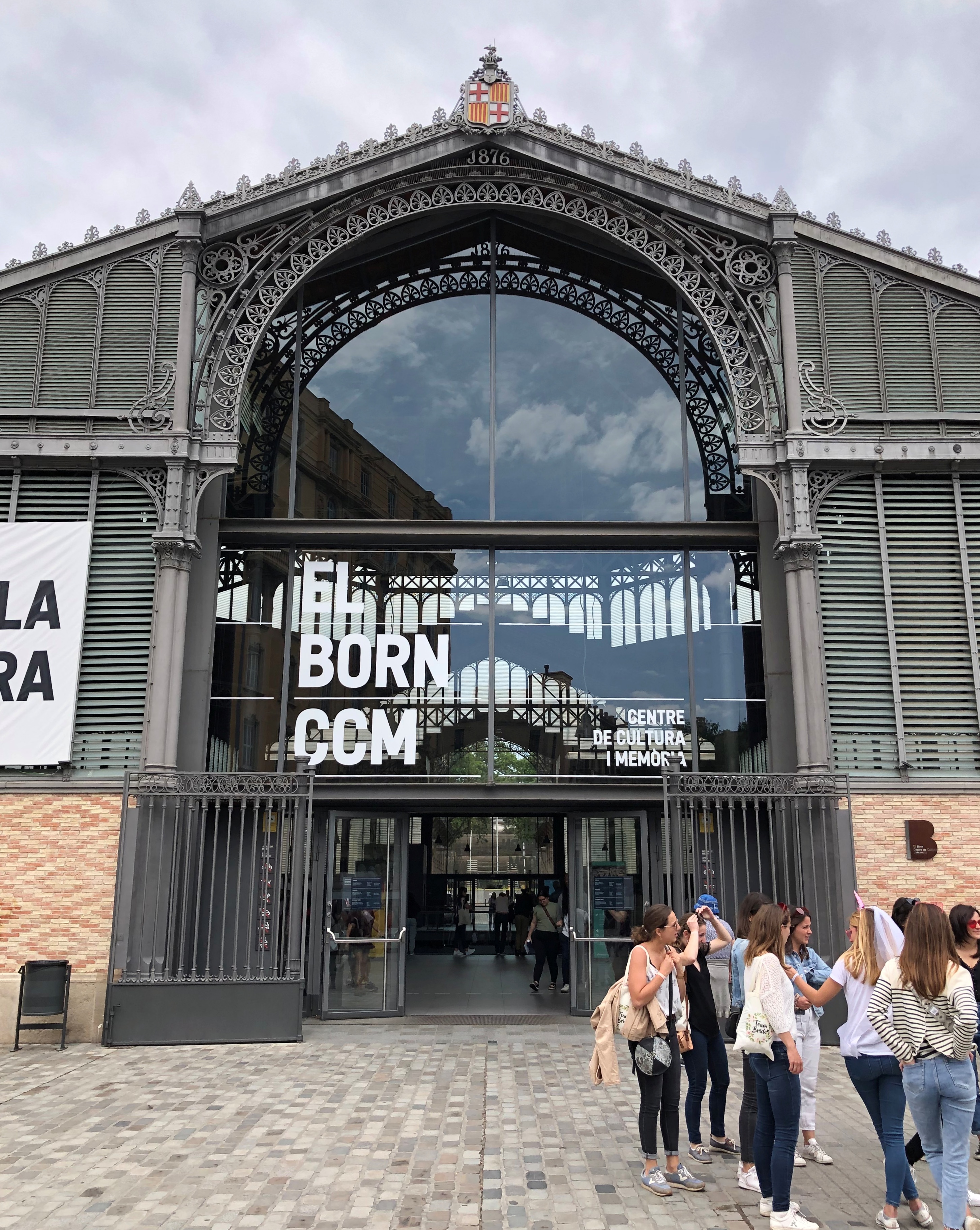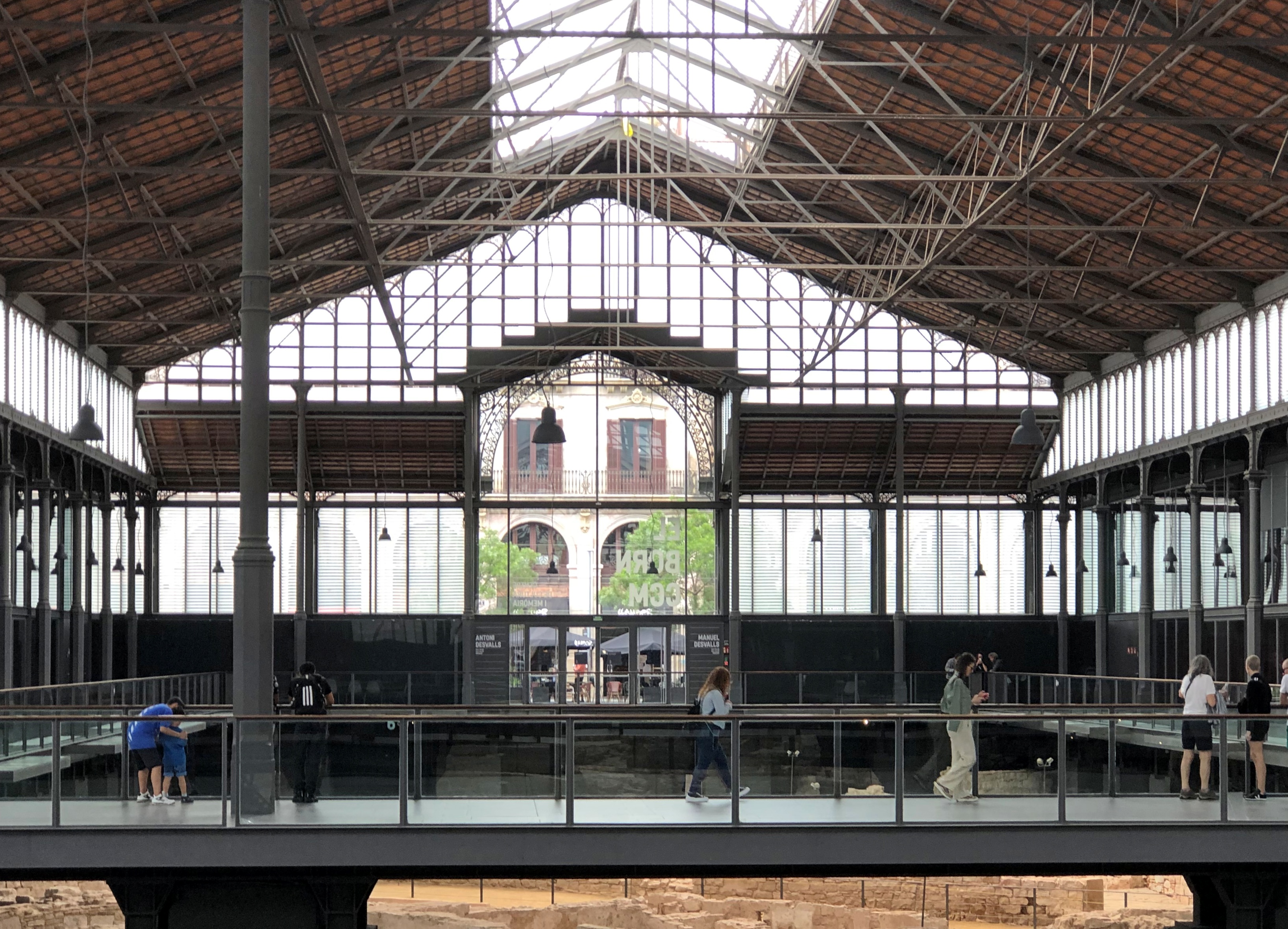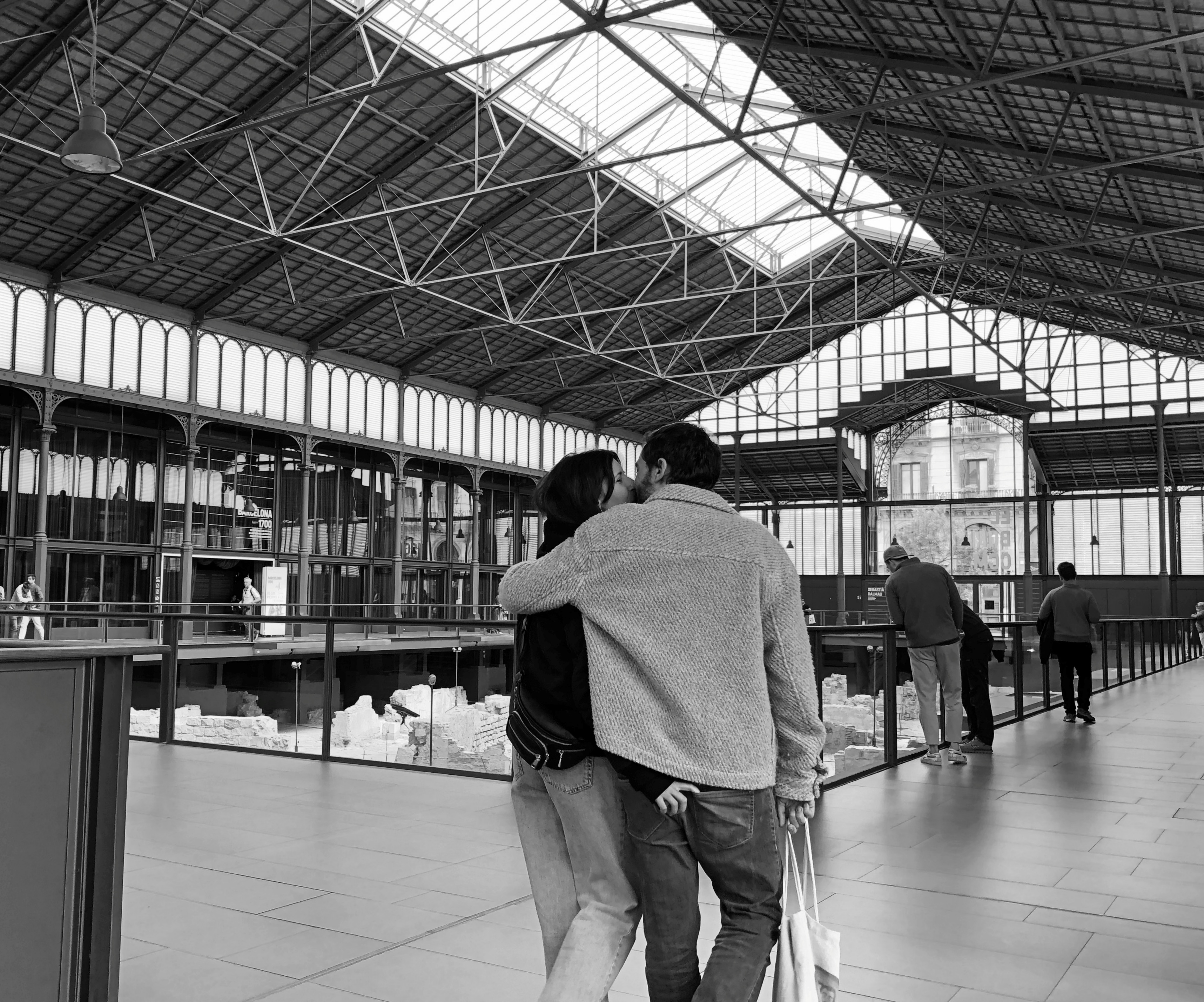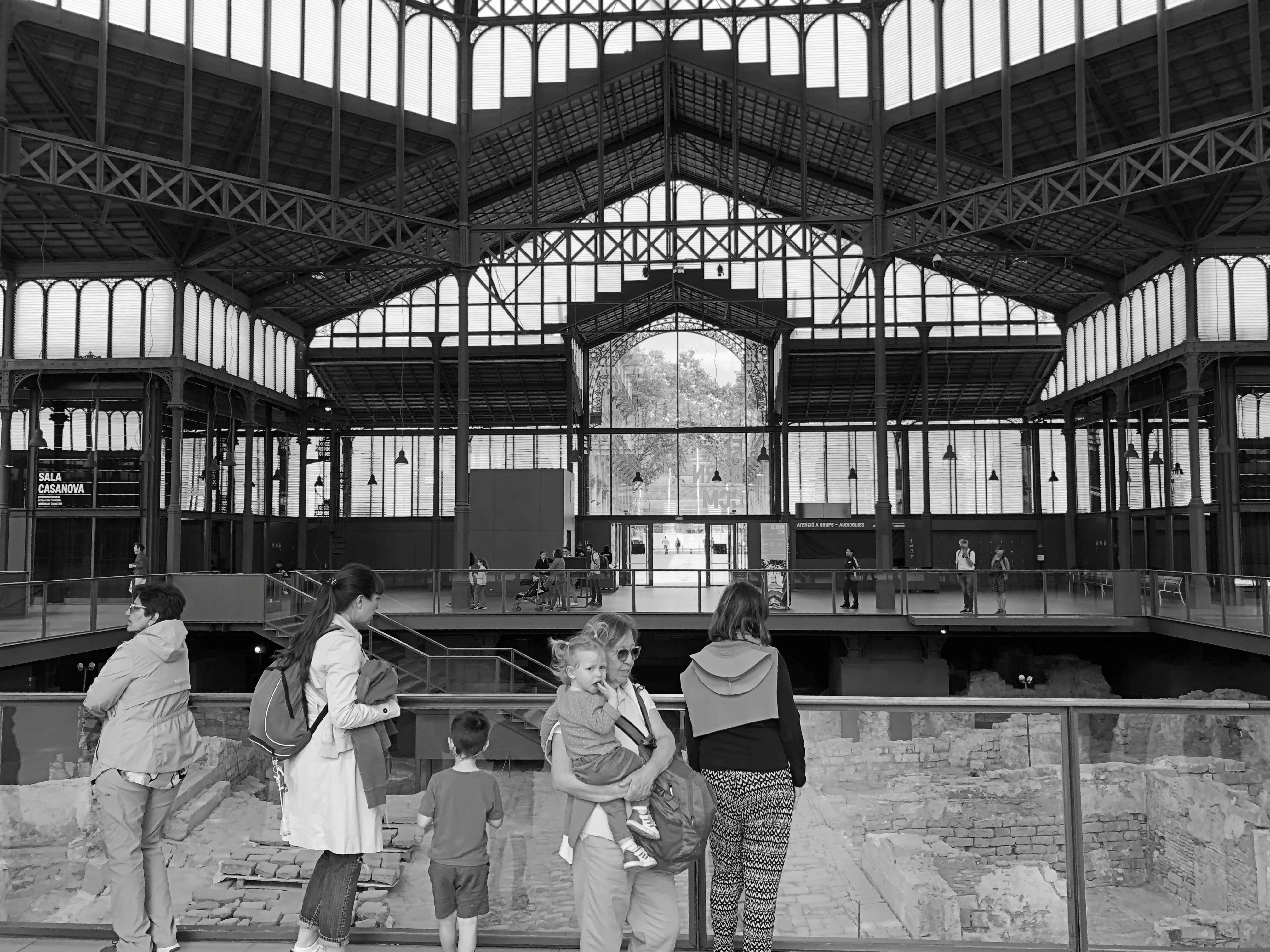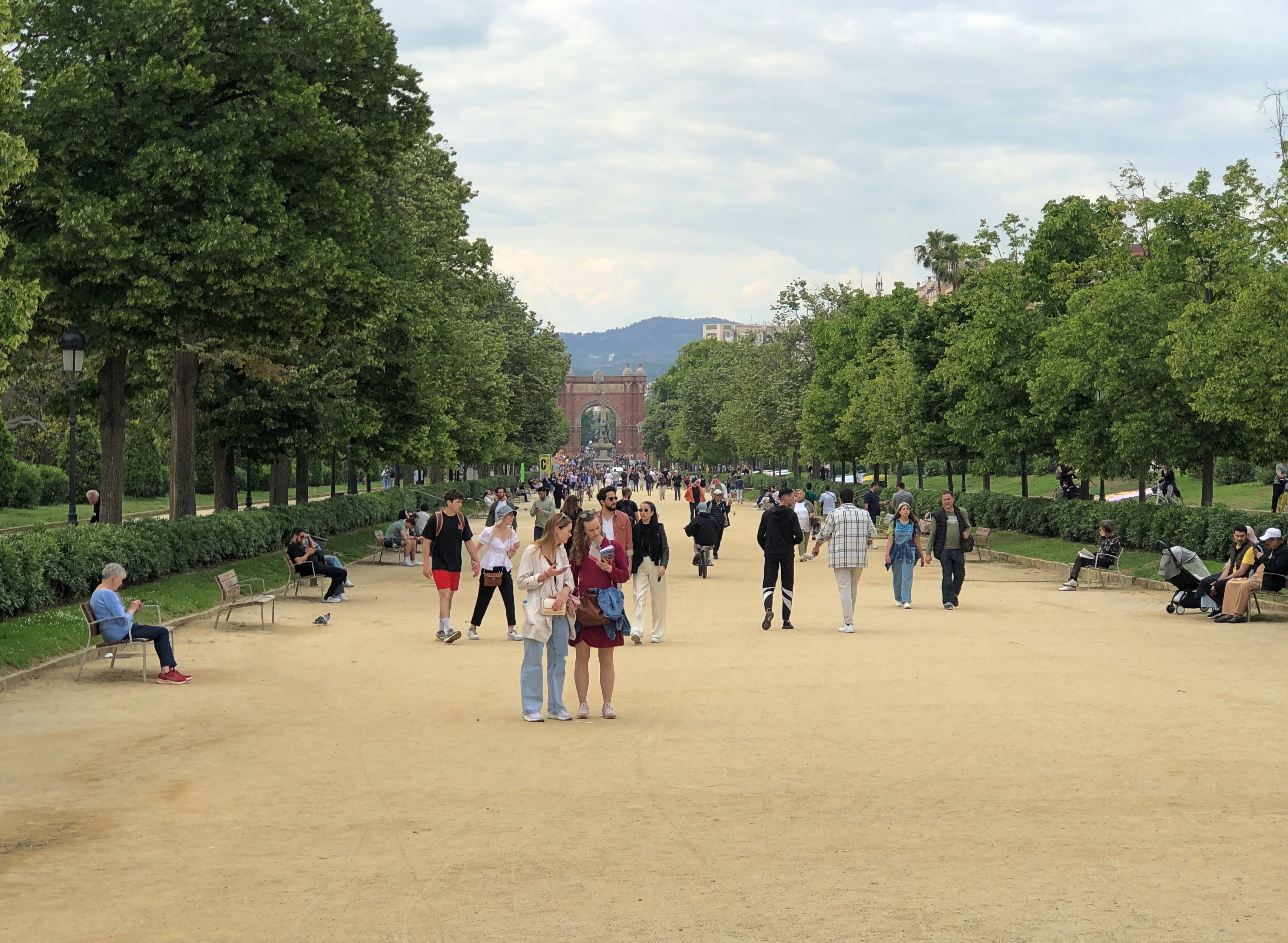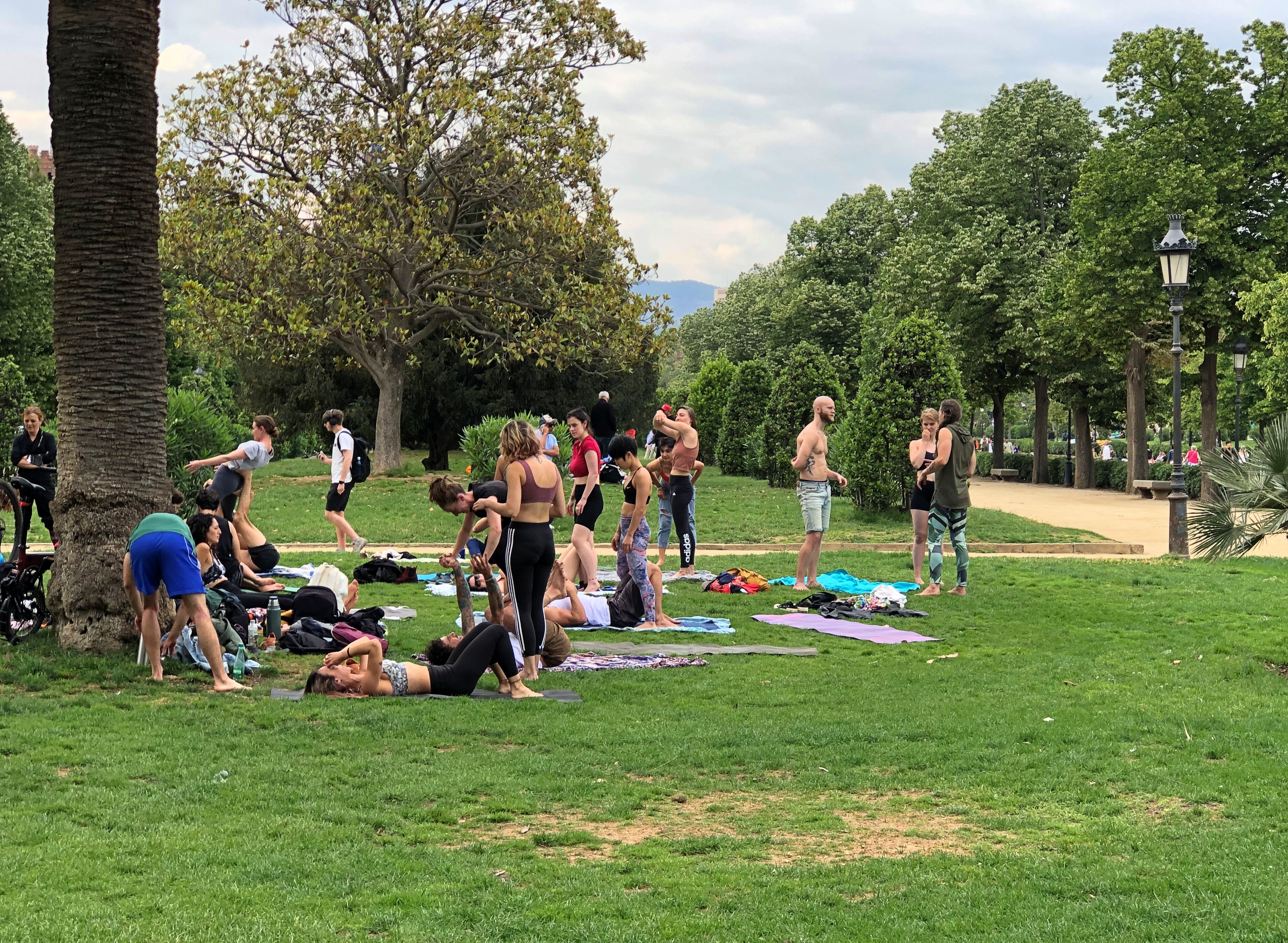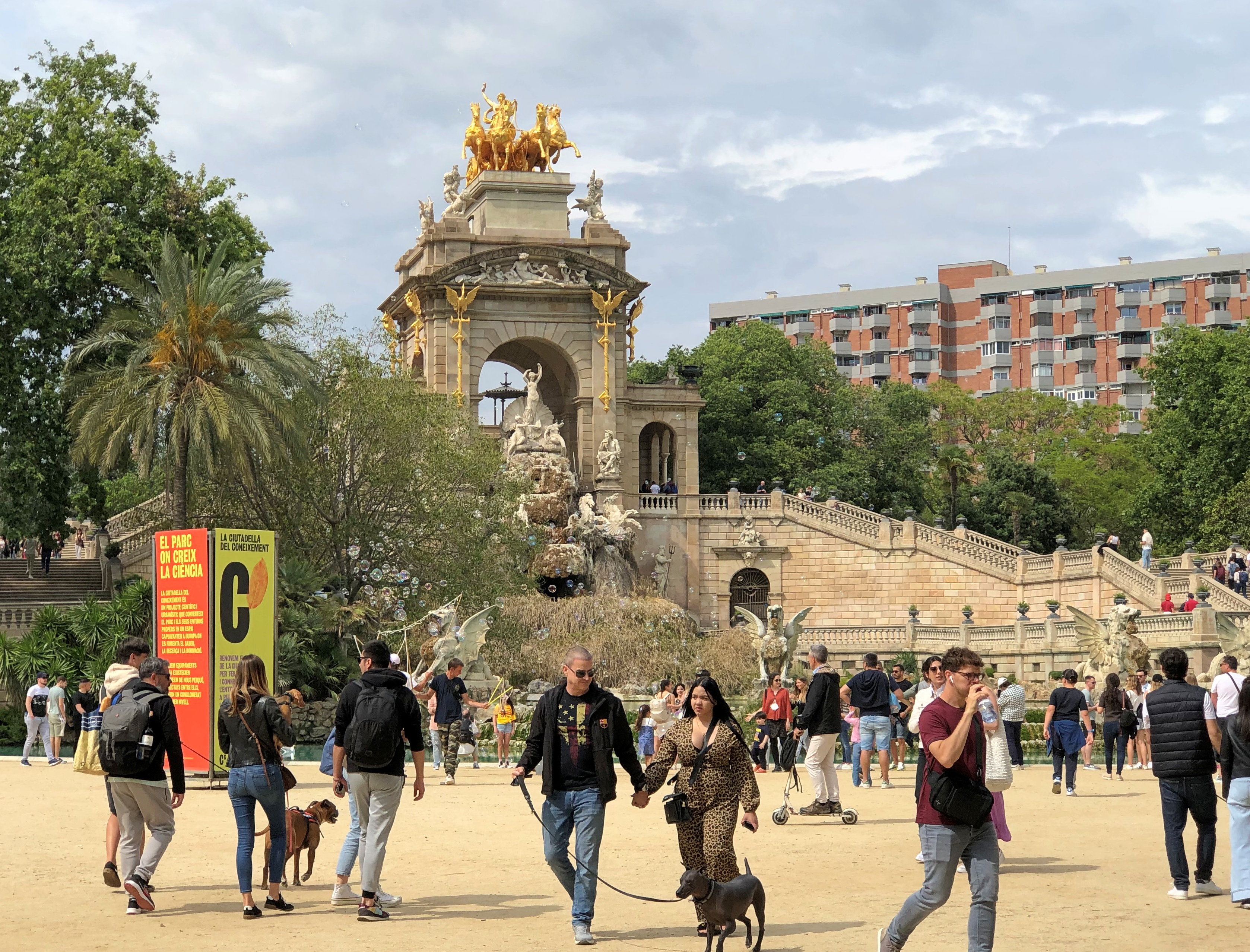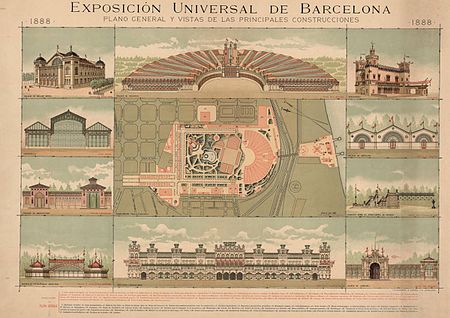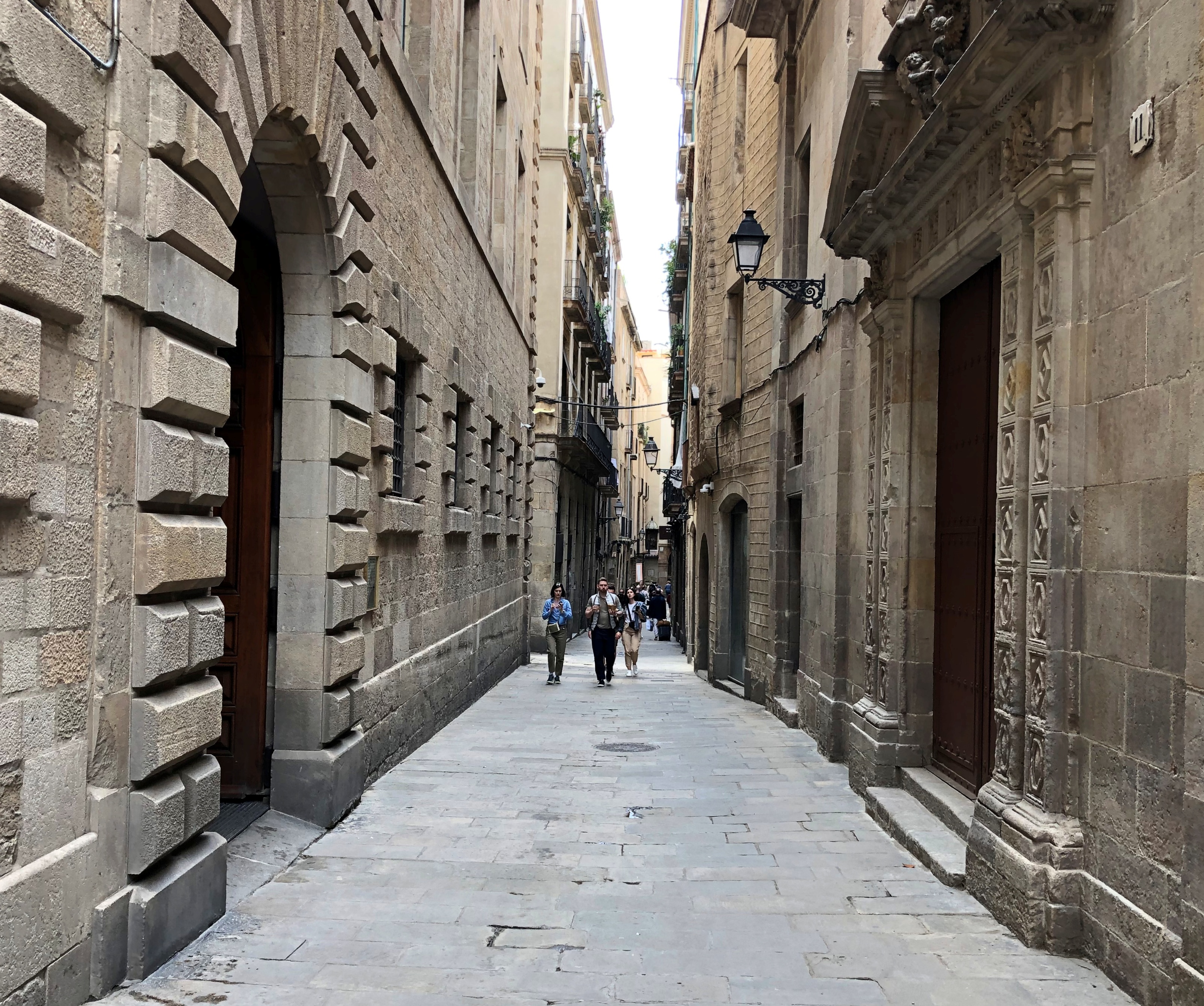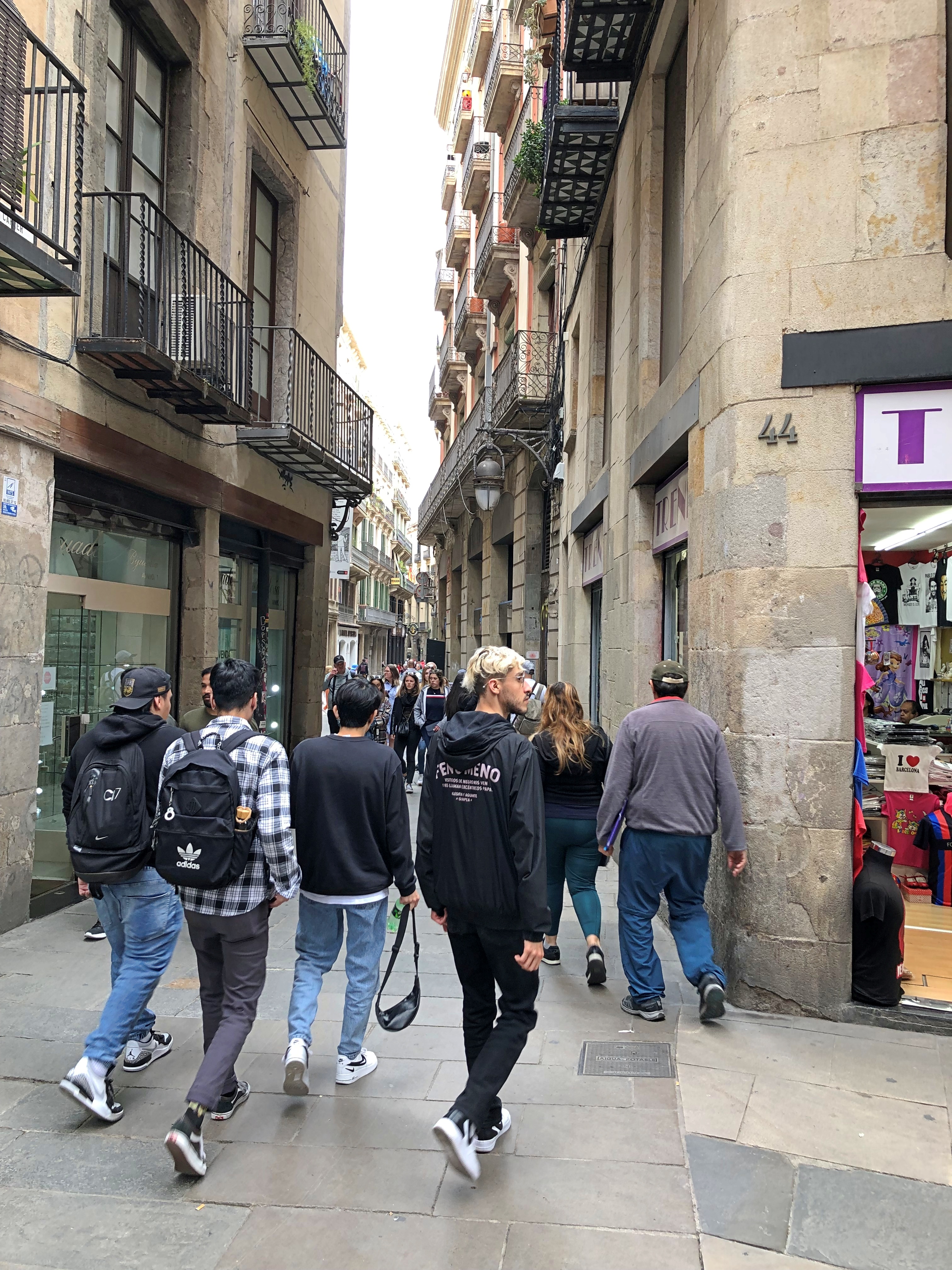On our way to the Basilica of Montserrat last month, I was pretty sure I’d found evidence of a Spanish post office nearby.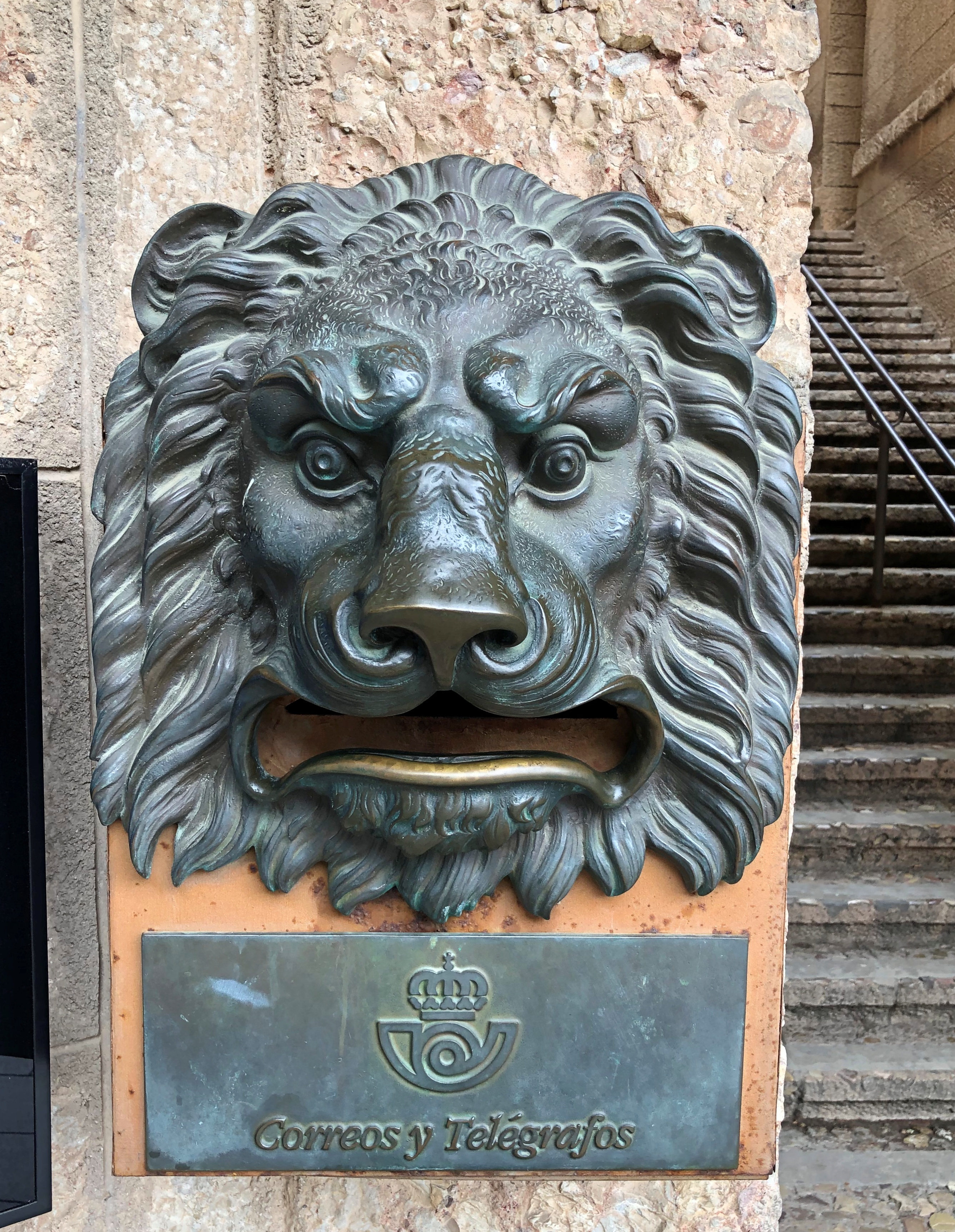
The post office wasn’t on the same level as this bronze lion, but up the stairs next to the lion, then to the right. I got lucky, arriving 15 or so minutes before closing. I knew the word for postage stamp (segell) and some numbers, and encountered one of the few retail clerks on our trip who knew little English, but we soon worked things out, helped along (I think) by her good mood at being so near to quitting time, or at least office-closing time, and my good mood at being at the site of a centuries-old abbey in the mountains of Catalonia.
Also, I’d already addressed the cards, so it was easy for her to see where they were going. Soon the cards were winging their way to Texas, Illinois, New York and Tennessee. I wonder whether you can still send a telegram. My guess would be no.
The basilica’s front entrance.
Visitor tip: if you didn’t make a reservation ahead of time, you need to go back downhill to the tourist information office, where you can pick your package and times. Our Monday strategy – that is, not visiting Montserrat on the weekend, but Monday – worked in our favor, I believe, since we didn’t have to wait long to get into the basilica proper, or the sanctuary where the Virgin of Montserrat, or Our Lady of Montserrat, resides.
The entrance leads to a resplendent courtyard. Resplendent pretty much describes to the entirety of the basilica, which is mostly a 19th-century reconstruction of the earlier structure burned by some of Napoleon’s soldiers.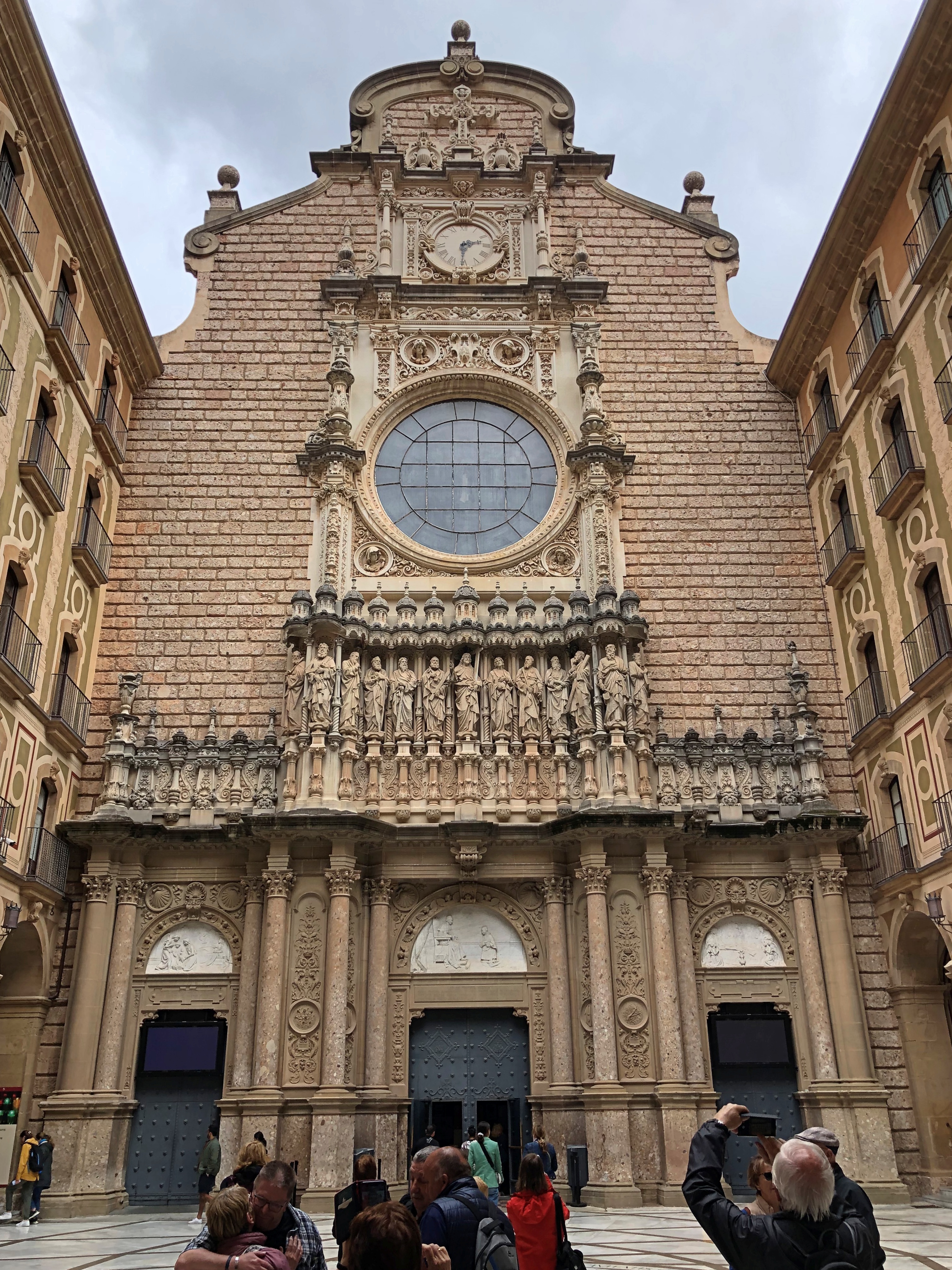
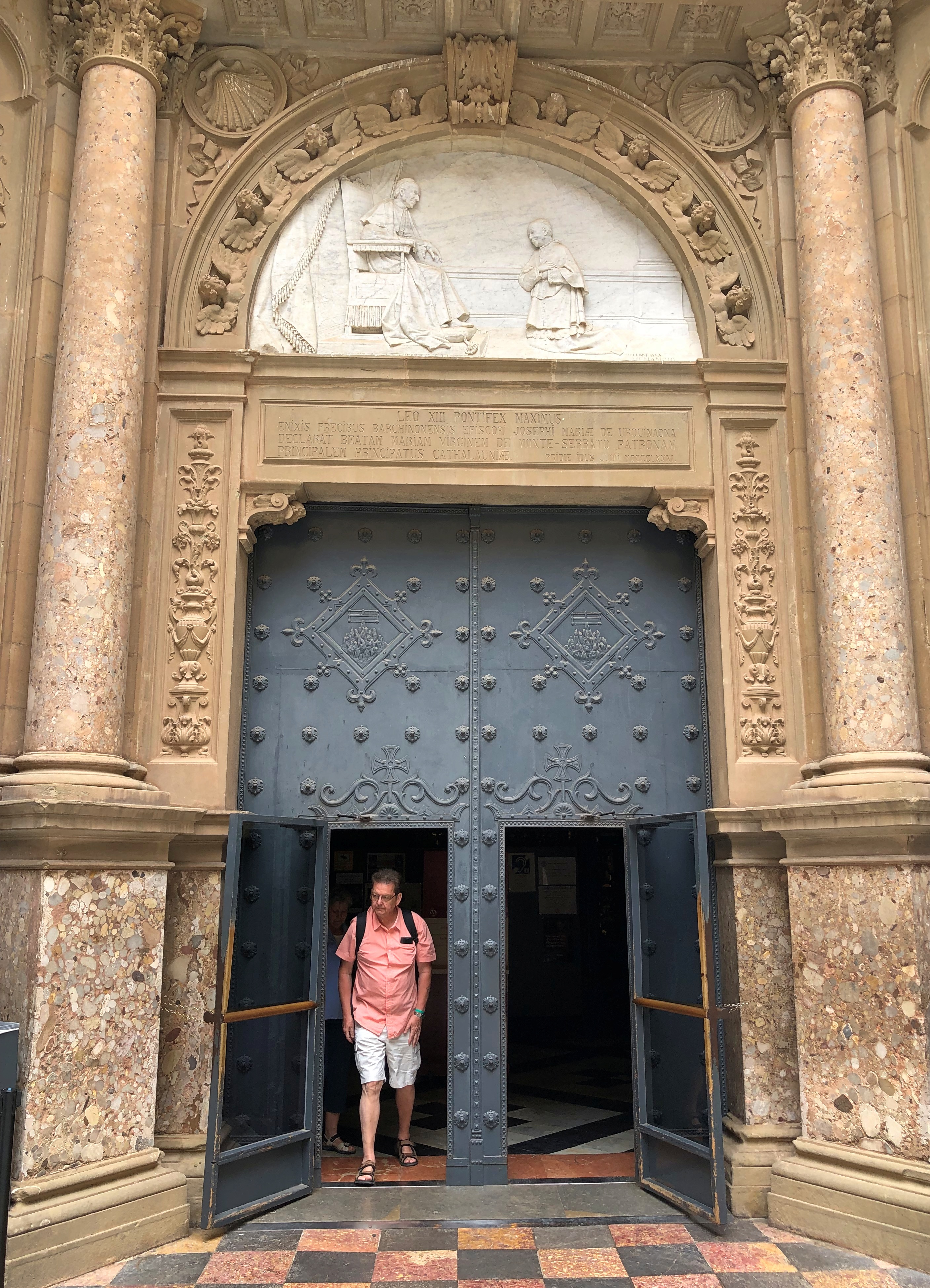

Access to Our Lady of Montserrat is via a staircase that leads to a hallway that curves behind, and above, the altar. A small window shows the statue in its sanctuary and, as they come and go, visitors to the statue.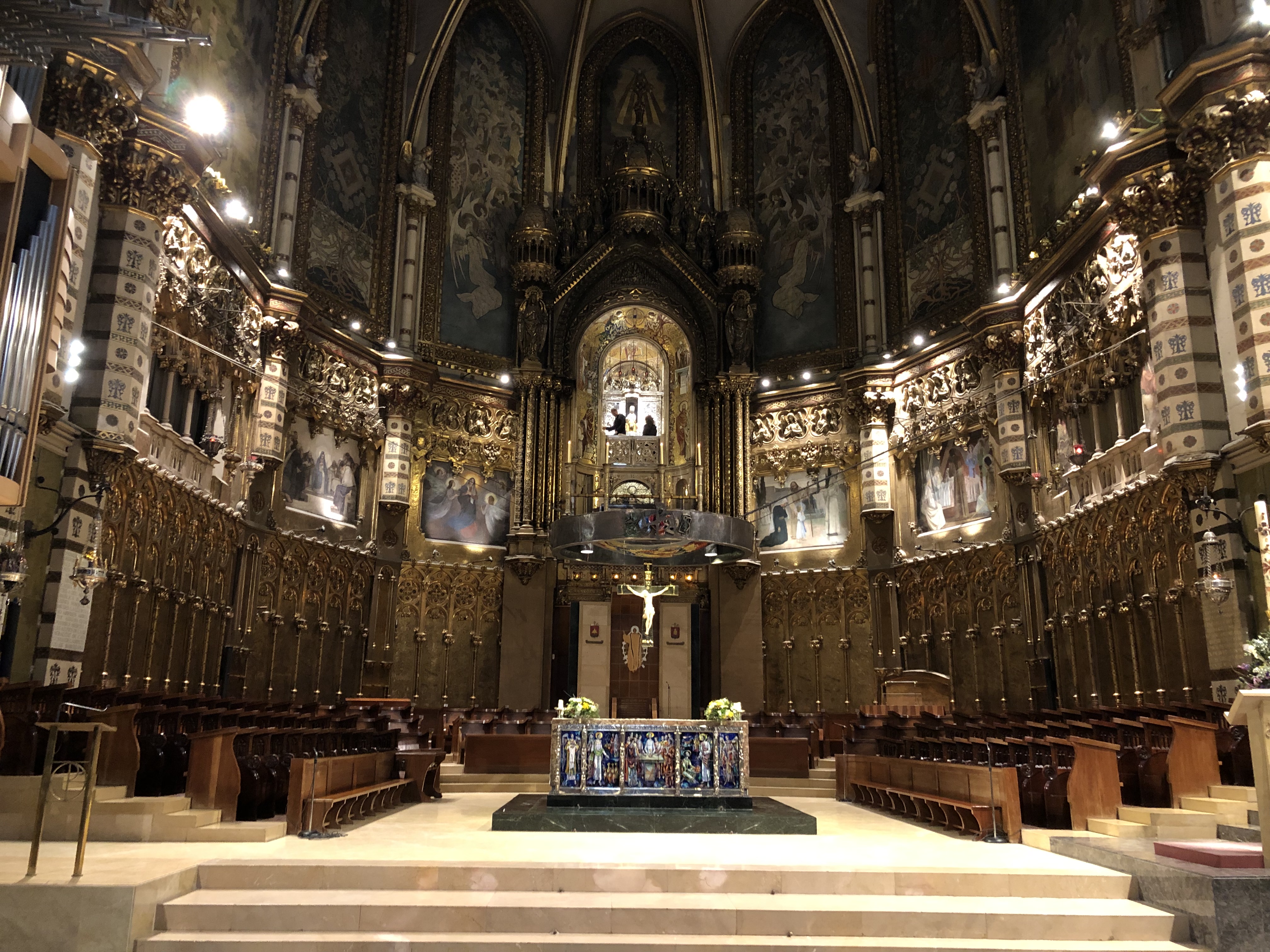
We took our turn visiting the statue. It is behind glass now, but otherwise we saw what countless others have for centuries.
From 1911 Encyclopaedia Britannica: “Nuestra Señora de Montserrat, Patrona de Cataluña (Our Lady of Montserrat, Patron Saint of Catalonia), is one of the most celebrated images in Spain, and her church is visited annually by more than 60,000 pilgrims. The image is small, black, and carved of wood, but possesses magnificent robes and jewels.
“In September 1881 it was solemnly crowned by Leo XIII., who sent a crown from Rome for that purpose. As the celebrity and sanctity of Montserrat increased, so did the number of devotees. Ignatius Loyola (1491–1556) laid his sword upon the altar of the Virgin, and, placing himself under her protection, started from Montserrat to begin his new life.”
